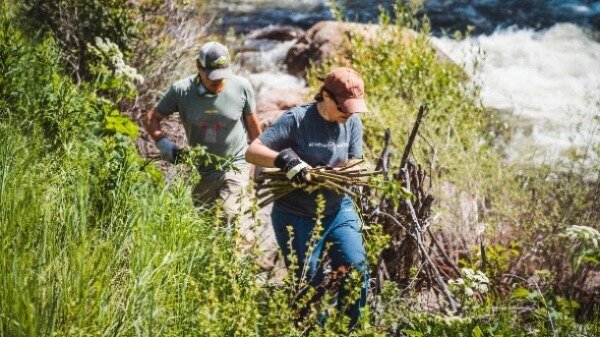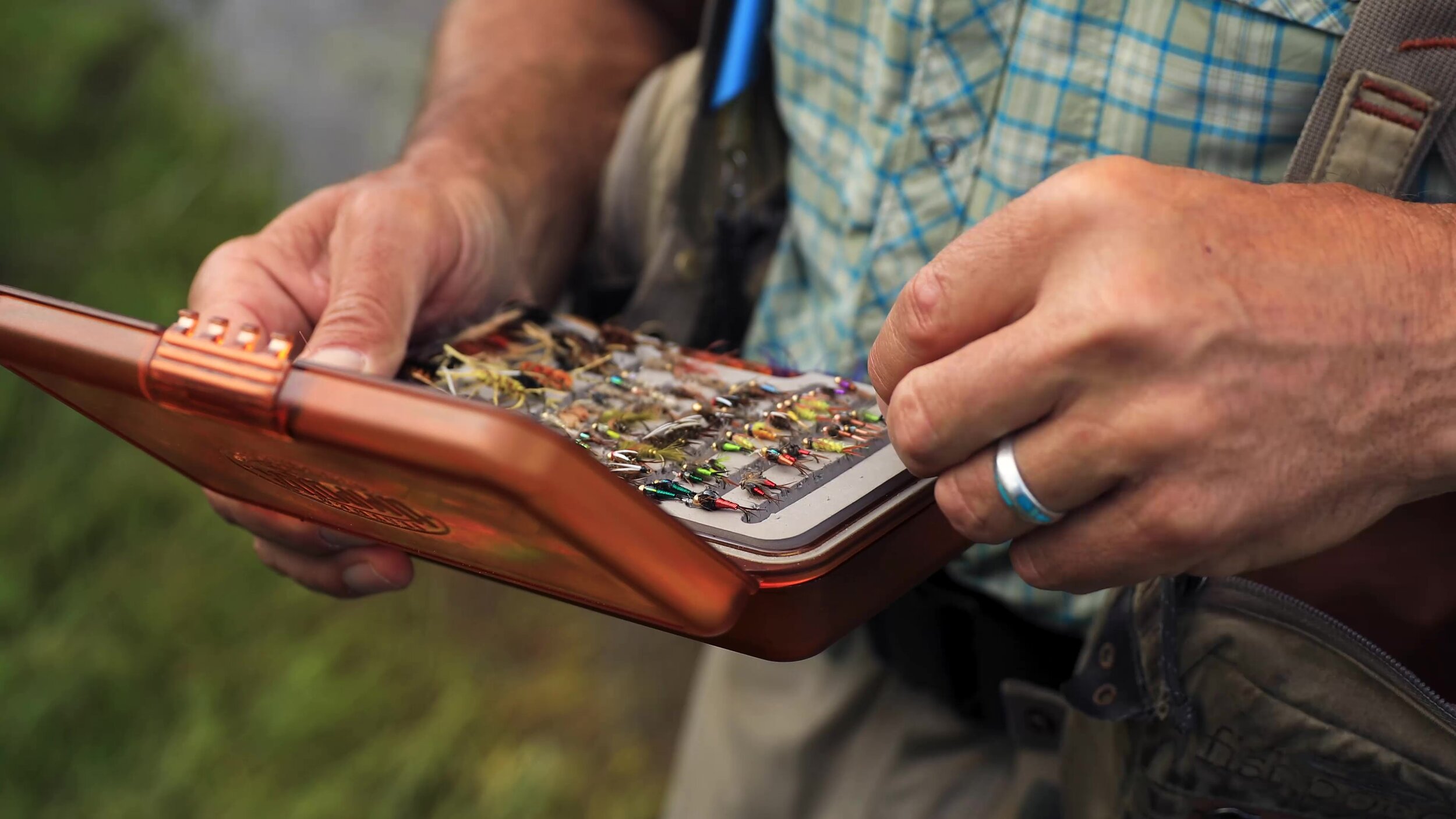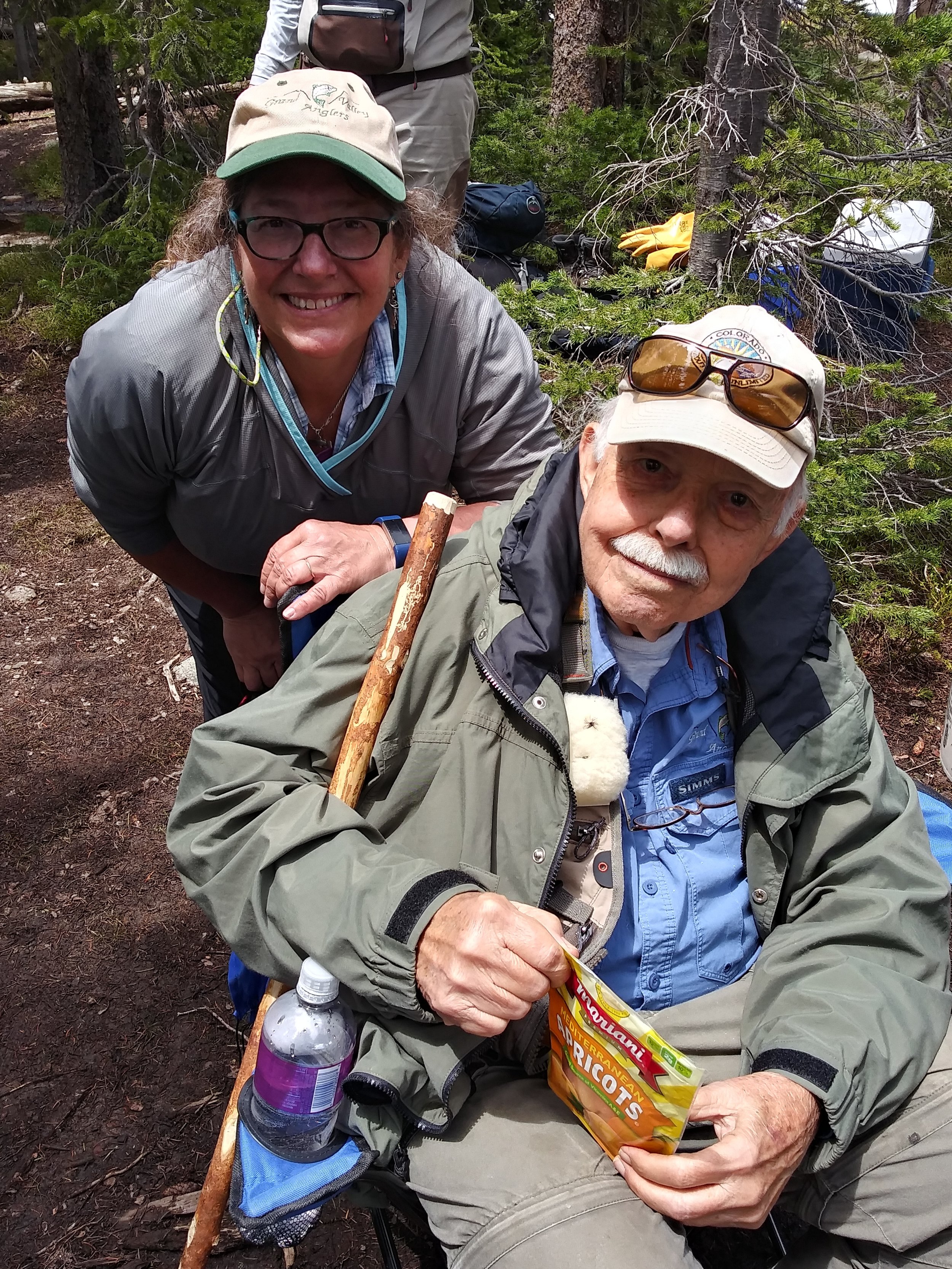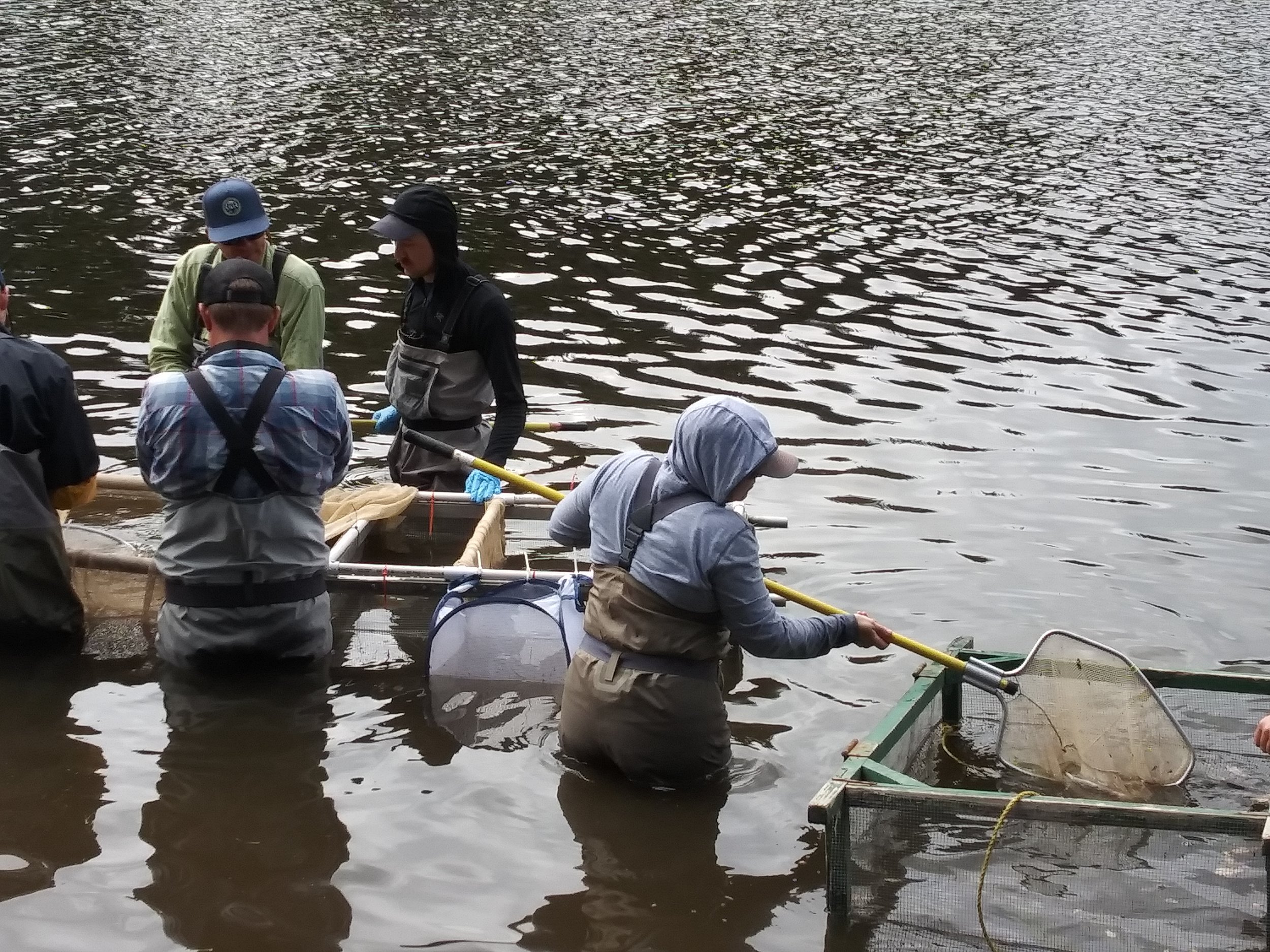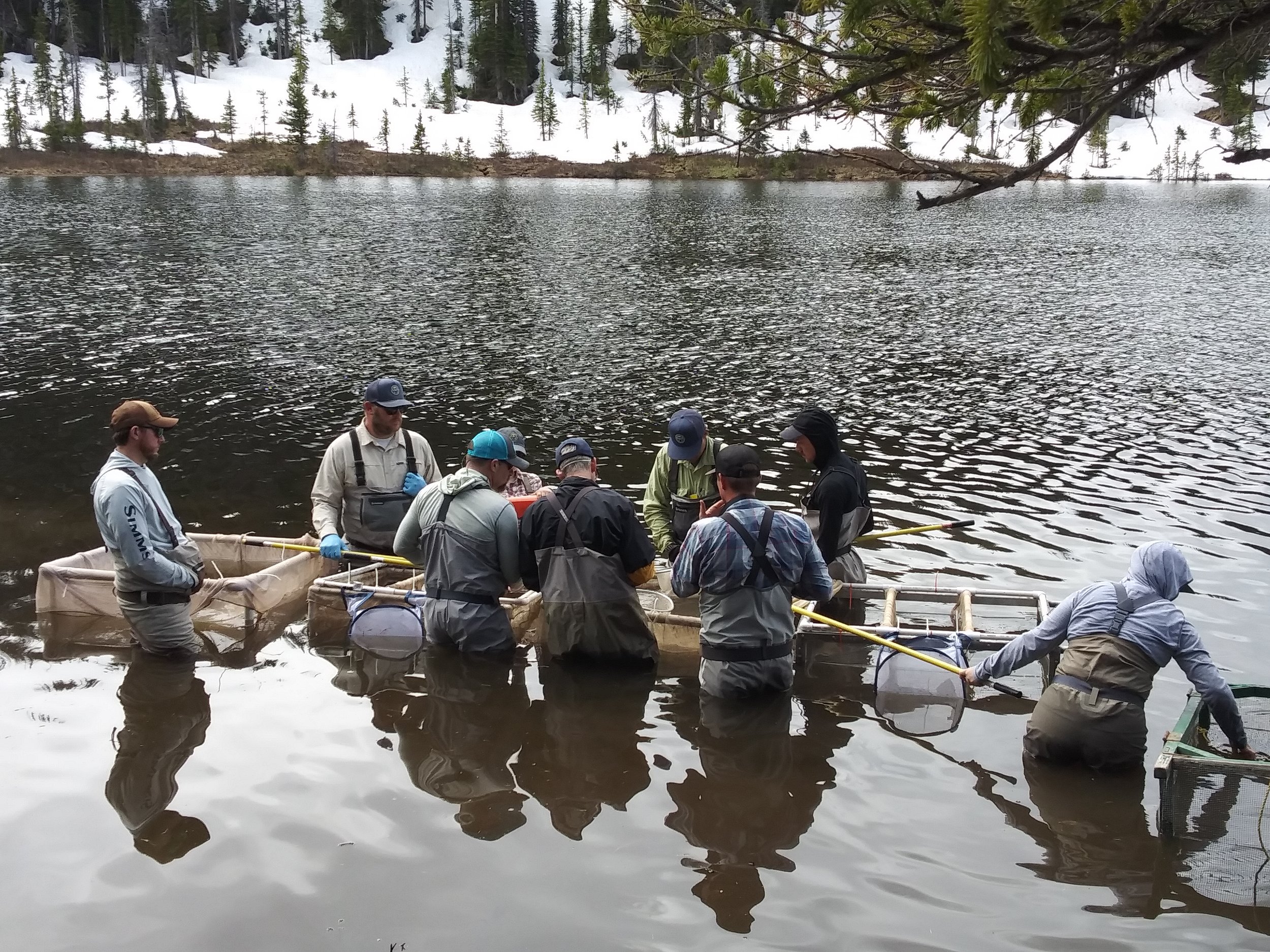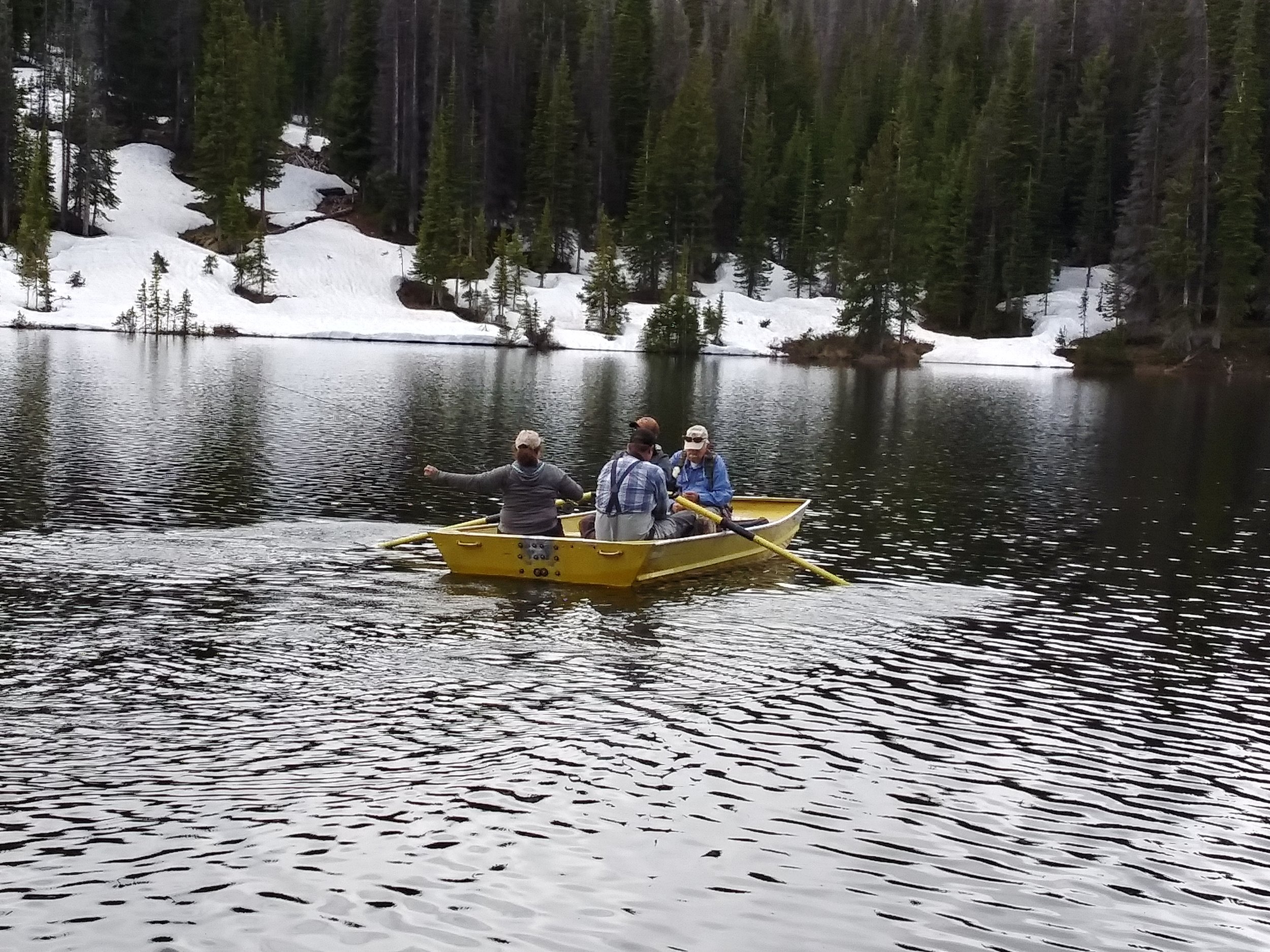We have some exciting opportunities that will get you outside and at the rivers! Check out this list of opportunities and click to sign up. With your help, we can get our rivers cleaner, healthier, and ready for restoration projects. Thank you and please share with friends and family!
Today is Colorado Gives Day - Support coldwater conservation!
Gives Day 2020 is here! Give to Colorado TU today and know your support for healthy watersheds and wild trout goes further. Every donation helps us to increase our portion of the Colorado Gives Day Incentive Fund. And every new or increased donation helps us to meet the Freestone Aquatics match. Today is a great day to support the rivers you love and the incredible fishing opportunities our beautiful state offers!
Your Gives Day donation to Colorado TU supports…
STREAM Girls – a watershed education program that combines STEM-learning with fly fishing and outdoor education on a local watershed
Native trout restoration like the Sand Creek project in Great Sand Dunes National Park and Preserve
Grassroots advocacy that gets results
Chapter projects that benefit watersheds and communities around the state
Give where you live and fish! Help us make 2021 a great year for healthy rivers and wild trout with your generous donation to Colorado TU TODAY!
Wishing you health and wellness!
--- the Colorado TU team
You've got backpacks, we've got Greenbacks
On July 28, 2020 over 700 native Greenback Cutthroats were released into the East Fork of Roaring Creek, representing the first population restored in Poudre Canyon tributary since the Greenback species was rediscovered in 2012.
The effort looked a little different this time around due to mandatory social distancing requirements. 43 volunteers and 15 agency staff (CPW & USFS) managed a series of staggered start times, social distancing, groups of less than 10 people each, and a much more strenuous trek to complete the 1st stocking of Greenbacks into new habitat on an important Poudre River tributary was a success. Thanks to all of the volunteers and agency partners, the effort was a huge success!
This project is adjacent to a much larger effort called the Poudre Headwaters Projects (PHP) that is planned to be the largest Greenback Cutthroat recovery project in the history of Colorado. The goal is to restore these native fish back into a part of their historic range on the upper Poudre - including 40 miles of small streams and Long Draw Reservoir. The PHP will create a “metapopulation” of Greenback Cutthroats that will be able to survive future impacts of climate change and catastrophic events.
A big thank you goes out to the volunteers who took time out of their week to help these fish return home!
Videos from Volunteers
Video taken by volunteer, Bob Fielding. On July 28, 2020 over 700 native Greenback Cutthroats were released into the East Fork of Roaring Creek. The effort w...
Good Samaritan legislation: A solution for a vexing problem
The 2015 Gold King Mine waste water spill was an environmental disaster that began at the Gold King Mine near Silverton, Colorado, when Environmental Protection Agency personnel, along with workers for Environmental Restoration LLC, caused the release of toxic waste water into the Animas River watershed.
by Trout Unlimited (Trout Unlimited is the nation’s oldest and largest coldwater fisheries conservation organization, boasting more than 140,000 members. TU’s mission is to conserve, protect and restore North America's coldwater fisheries and their watersheds. Learn more at www.tu.org)
Pollution from mine sites (abandoned or active) fall into two categories: “Non-point sources” and “point-sources”. Non-point source sites are those without a specific point where the pollution discharges into waterways. These are commonly waste rock and tailings piles that cause contaminated soil runoff. Point-sources are those that have a specific source of water pollution discharge that you can, well, point to. In this instance, think of a mine portal bleeding orange, heavy metal-laden water; that’s a point source.
This is an important distinction because under the Clean Water Act (CWA), the EPA requires a discharge permit for all discharges of point source pollution. The effect is that third-party groups - “Good Samaritans” who have no legal responsibility or connection to an abandoned mine – who are interested in conducting a cleanup to address a point-source, draining abandoned mine would inherit permanent liability for a problem they didn’t create. Additionally, Good Samaritans would be required to hold a CWA pollution discharge permit and meet all applicable water quality standards as if they had created the pollution. In other words, the Clean Water Act treats polluters and Good Samaritans the same. There is no distinction in the law.
Because a draining mine is likely to drain forever, the entity performing the work at an abandoned site would be saddled with accountability for any remaining pollution and held liable as if they had created the pollution to begin with - even if their actions create measurable improvements in water quality. The existing legal framework is “all or nothing”. A cleanup project must result in 100% attainment of water quality standards – 99% isn’t good enough. This creates legal jeopardy for Good Samaritans who are unsure if 100% attainment is possible. This conundrum leaves the EPA as the only entity legally positioned to clean up leaking, abandoned mines. But, again, it is only through Superfund can this action occur.
Under current law, only the EPA can treat discharged mine water from abandoned mine sites. ‘Superfund’, or the Comprehensive Environmental Response, Compensation and Liability Act (CERCLA) provides the legal authority and source of funding for the EPA to treat mine waste water from a point-source. But, mine sites are not the only toxic sites awaiting EPA Superfund cleanups. At present, there are over 1300 toxic chemical/pollution sites on the EPA’s Nation Priorities List (NPL) awaiting funding and attention, only a few of which are mine sites. Federal resources are limited for the EPA to conduct cleanups at Superfund sites and there is no dedicated funding source beyond the Congressional appropriations process. And, unfortunately, there are hundreds - if not thousands - of smaller, abandoned draining mine sites contaminating the environment that are not likely to qualify for a Superfund action. These are sites that Good Samaritans could take on to increase cleanup capacity beyond the back-logged and underfunded Superfund program.
After the Gold King mine spill in 2015, numerous Federal and State agencies placed a greater emphasis on quantifying the scope and scale of draining mines in Colorado. A study by the State Division of Reclamation Mining and Safety (DRMS) showed over 250 draining mines in Colorado with 148 likely degrading downstream water quality. With more frequent temperature fluctuations and population increases across Colorado, having clean water sources will become more important for future generations of Coloradans. The draft legislation discussed in previous summaries and below, will give qualified groups the opportunity to assist the EPA and federal agencies in addressing the cleanup of draining mines.
Good Samaritans would only be those private organizations and/or state agencies qualified to conduct cleanups who apply for, and receive, a new type of “Good Samaritan” permit from the EPA. At a minimum, permit applications would have to include: site description, parties to be involved in project, description of mine residue to be remediated, description of the expertise of the Good Samaritan and resources available to successfully implement the project, baseline environmental conditions, comprehensive remediation plan, monitoring plan, engineering plans, contractors, work schedule, health and safety plan, contingency plans, project budget, proof of financial resources and an operation and maintenance plan. Permits would only be issued after a public hearing and comment period, and only if the Good Samaritan meet requirements to the satisfaction of the EPA and applicable regulations.
Funding for Good Samaritan projects would come from a variety of private and public sources, including both state and federal dollars depending on site locations. Grants and foundation money could also be utilized to fund these types of cleanups that would take on a true collaboration of all project partners and interest groups in the surrounding area.
If the EPA chooses to issue a permit for an abandoned mine cleanup, a Good Samaritan would not be required to hold a traditional CWA pollution discharge permit. And, they would be shielded from lawsuits if 100% attainment of water quality standards are not achieved. The EPA would instead hold the Good Samaritan to the requirements and terms of the permit. And, in the unlikely event that a Good Samaritans violates the terms of the permit, and the violation leads to a reduction in water quality or environmental conditions below baseline levels, then the EPA is authorized to require the Good Samaritan to return the site to baseline conditions or face fines, bond forfeiture and permit revocation.
Good Samaritan legislation is being proposed by conservation organizations such as Trout Unlimited who want to conduct Good Samaritan cleanup projects, but are prevented from doing so under current laws. Under existing laws, there are three primary disincentives to Good Samaritan cleanups. They are: 1) It is not feasible to improve water quality to meet high Clean Water Act standards, even though there would be measurable water quality improvements. 2) The Good Samaritan would be permanently liable for pollution they didn’t create. 3) The threat of being sued under “citizen suit” provisions of the Clean Water Act if a project does not attain 100% of water quality standards for any given criterion - again, even if there is a measurable improvement in water quality.
Without Good Samaritan legislation, abandoned mines sites throughout the West that are not qualifying candidates for Superfund will continue to drain pollution every single day without a legal mechanism to begin addressing the problem. Under CERCLA, these sites are not candidates for Superfund projects and therefore the EPA does not have the funding or authority to clean them up. By passing Good Samaritan legislation, state agencies and private organizations can fill in this gap and help take-on cleanups that would yield cleaner water to the benefit every water user downstream.
The current draft proposal is for a pilot program that would terminate after 15 projects or 7 years, whichever comes first. After which, Congress would either let the program expire or pass legislation to continue the program. This will allow for the concept to be proved-up and show that Good Samaritan mine cleanups are effective before making permanent changes to federal law.
In the end, Good Samaritan proponents believe any improvement to water quality, over any period of time, is better than none at all.
Consider a gift that gives back
Rep Your Water Hats & Sun Hoodies
Show your support for our state’s beautiful rivers and fish by sporting the Colorado TU Rep Your Water trucker hat the next time you’re out for a day on the water! Or with your generous support, the lightweight cutthroat Rep Your Water Aqua Sun Hoodie ($68.95 value) can be yours. We offer sizes S-XXL so there is something for everyone!
Shop local with gift cards to your fly shop
Support conservation and buy local this holiday giving season! Gift cards are available to the following CTU Business Partners: Alpine Angling (Carbondale), Anglers All (Littleton), Angler’s Covey (Colorado Springs), ArkAnglers (Salida/Buena Vista), Cutthroat Anglers (Silverthorne), Duranglers (Durango), Front Range Anglers (Boulder), Roaring Fork Anglers (Glenwood Springs), Steamboat FlyFisher (Steamboat Springs), St. Peter’s Fly Shop (Ft. Collins), Trouts Fly Fishing (Denver and Frisco), Western Anglers (Grand Junction).
Hit the slopes for native trout
We've teamed up with one of our favorite grassroots conservation organizations, Colorado Trout Unlimited, and one of the most talented outdoor artists in the world, Nick Laferriere to bring this Special Edition Snowboard and Skis to you! For every board or pair of skis built, Gilson Snow will donate $75 to CTU to be used in their conservation efforts to protect and expand populations of native trout in the state of Colorado.
Using Gilson's most versatile All-Mountain models, Nick has designed artwork that embodies our passions of getting on the mountain and getting into the river. Whether exploring the backcountry or cruising a groomer, the Fly By is well equipped to handle a multitude of terrain and condition combinations. If matching the hatch and finding powder stashes are both up your alley, the Fly By is the board or skis you need in your quiver.
Native Trout Dog Collars by Dublin Dog Co.
Dublin Dog has generated a limited-edition cutthroat trout collar to support awareness of, and raise funds for, native trout recovery in Colorado. Proceeds from this collar benefit Colorado Trout Unlimited and their efforts to protect, conserve, and restore Colorado’s native cutthroat trout.
Also available at select locations:
The Next Eddy Salida, CO
Yampa Valley Fly Fishers Steamboat Springs, CO
Basin+Bend Evergreen, CO
West Denver Trout Unlimited Chapter
Five Rivers Trout Unlimited Chapter
Protect Our Rivers License Plate
Show your support for Colorado’s rivers by displaying this ultra-cool license plate on your vehicle! 100% of the money raised goes toward the conservation, protection, and restoration of rivers and streams in Colorado. So whether you’re a farmer, kayaker, hunter, rafter, or angler – or just someone who appreciates the natural beauty that rivers bring to our landscape – the Protect Our Rivers license plate shows that you’re willing to put your money where your interest lies!
Give the Gift of a TU Membership
Need a gift idea for that special person in your life? Consider the gift of a Trout Unlimited membership. Memberships include some awesome benefits, such as a subscription to the TROUT magazine, but best of all, your membership helps protect cold, clean fishable waters for generations to come.
Thank you for another great year and happy holidays!
Preserve in Arkansas Valley will protect 90 acres of land plus a mile of public fishing
Picture provided by Central Colorado Conservancy.
The Central Colorado Conservancy (CCC) in the Arkansas Valley announced this week that it had raised the final $50,000 needed for the Ark River Community Preserve in southern Lake County – ensuring that the $1.1 million project can move ahead with the purchase of eight properties along the Arkansas River.
Thanks in part to the generous support of Anglers All and the Jones Family Foundation, Colorado Trout Unlimited and our Collegiate Peaks Chapter were able to make gifts that brought the fundraising total past the goal line for this important project. National Trout Unlimited, the City of Aurora Water Department, Lake County, Great Outdoors Colorado, Colorado Parks and Wildlife Habitat Program, Gates Family Foundation, Freeport-McMoRan Foundation, and Climax Mine Community Investment Fund, as well as many individual gifts, were also contributors to this project.
When completed in the next few years, the Preserve will protect 90 acres and open a mile of river to public fishing on Gold Medal Trout Waters. The area is also an important corridor and wintering ground for wildlife, including bighorn sheep, elk, moose, mountain lions, bobcats, and bears and bald eagles and red-tailed hawks hunt this stretch to feed their young.
The CCC newsletter included this quote from outgoing Executive Director Andrew Mackie, “This project is the result of an incredible collaborative effort among the property owner, John Andrick, Lake County Open Space Initiative, Colorado Parks and Wildlife and many other organizations and community members who contributed to the final phase of our fundraising campaign. So it's fitting that the Preserve is a true community asset that everyone can access and enjoy – from anglers and kayakers to hikers and birders. The broad support also demonstrates the significant role natural areas play in our community identity and quality of life.”
Thank you, Anglers All and Jones Family Foundation, for helping us to help CCC so that this great property will benefit the public in perpetuity.
CTU 50th Anniversary Film headed to Zimmerman Lake this summer (Behind the Scenes)
On July 2, 2019 passionate TU volunteer and native trout angler, John Trammell headed up with CTU and Josh Duplechian of Trout Unlimited to participate in filming for CTU’s 50th Anniversary Film featuring the native trout work on Zimmerman Lake. Below is his personal account of the day. Enjoy!
John and his daughter Melissa.
MY LIFE AS A FLY FISHERMAN PART 21: Greenbacks and Zimmerman Lake
by John Trammell
Up front I’ll confess that not much of Part 21 is about fishing, but about what I observed at Zimmerman Lake on July 2 this year. What I saw was a team of government agencies and Trout Unlimited volunteers working scientifically and physically to preserve and propagate our state fish - the greenback cutthroat trout. I could not have been more impressed by the skills and hard work I saw. Really amazing.
Zimmerman lake is 40 miles east of Walden, near the continental divide, at 10,000+ feet elevation. It has a population of a few hundred greenbacks, placed there to become the source of eggs for the purpose of increasing the numbers of our state fish. On the day my daughter Melissa and I were there, the steep trail up to the lake was both rough and muddy, with numerous snowdrifts. (The day before, the workers had shoveled away drifts that were impassable to ATVs.)
The ancestors of the greenbacks in Zimmerman Lake were a small number of fish rescued from their only remaining natural habitat, Bear Creek near Colorado Springs, when the habitat was threatened by a wildfire. Being so few, when they’re artificially spawned it is important to preserve genetic diversity. Observing how that is done was fascinating - not only because of what was done, but how it was done under difficult field conditions.
When we arrived at the work site the fish were already being held in floating mesh pens. Wader-clad workers separated them into categories to be processed on a long table set up amid mud, snow and trippy exposed tree roots. They were given an anesthetic bath to make them more docile and to reduce shock while they were being processed.
CPW’s project leader Kevin Rogers told me that his agency knows each greenback in the lake individually. Each has a little VIE tag behind its eye that he identifies to a person who then uses a hand-held electronic device to read an internal pittag. Each fish is described verbally (e.g, “ripe female, good condition; immature male”), its pittag recorded, measured, weighed, and photographed beside its PIT number. Then the fish is put into a five-gallon bucket of water, to recover from the anesthetic. This all occurs rapidly as the trout are passed down the table. This information is used to select males and females to have their eggs and milt combined. Records of the combinations are kept with the intent to achieve maximum genetic diversity.
After the anesthetic has worn off and the greenbacks are trying to swim out of the buckets, they are returned to the lake. Forest Ranger Chris Carrell hustled those 40-pound buckets down to the lake all afternoon, quickly returning the empties back to the table for more greenbacks. After a while, realizing the physical toll it was taking on him, Melissa helped. Although she wasn’t there as a representative of her agency, the National Park Service, she also helped with the work at the table. Being somewhat enfeebled by the trip up to the lake, I just sat, and observed.
Fertilized eggs are treated with an iodine solution, and taken to CPW’s Mt. Shavano hatchery to be hatched and reared for stocking into suitable waters. In addition to the objective of saving them from extinction, the aim is to have a sustainable population of greenbacks for Coloradoans to enjoy.
I’ve long been a fan of native cutthroat trout, so I’m grateful to the State of Colorado for going to the expense and trouble to save the greenbacks. And I’m grateful to the agency people and TU volunteers who do the work.
““I know I volunteer because I love trout, trout habitat, and trout fishing. Of those three, I think it’s the habitat I love best, and not just because without it we can’t have the other two. It’s because I just love it, everything about it. I get a thrill every time I approach a trout stream.””
Restoring Rivers with Can'd Aid
This summer, Colorado Trout Unlimited teamed up with Can’d Aid to help restore rivers in Colorado. Can’d Aid is a nonprofit organization that was founded as an immediate response to the massive flooding that devastated the towns of Lyons & Longmont, CO, in September 2013. Since then, the organization has been helping spread people powered do-goodery when and where it is needed most.
On July 13, volunteers generously came out to help restore a section of the Gore Creek in Vail, CO. This river has seen some hard times and have been labeled unhealthy since 2004. To help this river on it’s path to recovery, volunteers planted willows and lodgepole pines to anchor the heavily eroded riverbeds. This effort will protect the river from further erosion while also improving the habitat for fish and other wildlife. Colorado Trout Unlimited is proud to have partnered up with Can’d Aid, River Restoration Adventures for Tomorrow, Eagle Valley TU, and the City of Vail to make this a successful day!
Can’d Aid projects like this are supported through Wild Basin Boozy Sparkling Water, which donates $1/case sold.
“Did you know that you can replant a willow tree simply by cutting a branch and sticking it in the ground? They’re hearty plants that provide protection for riverbank erosion while also lending much-needed shade to fish and wildlife.”
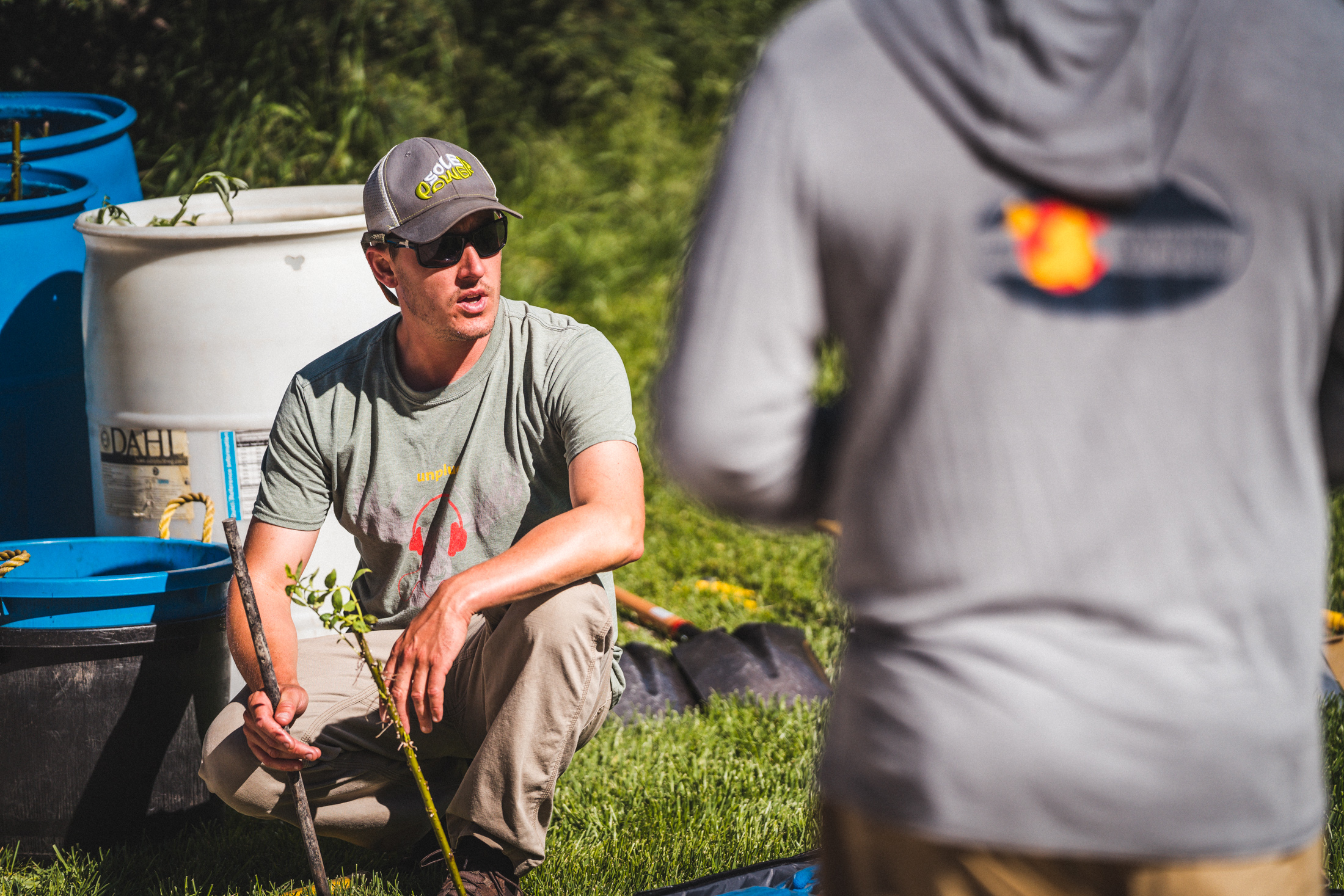
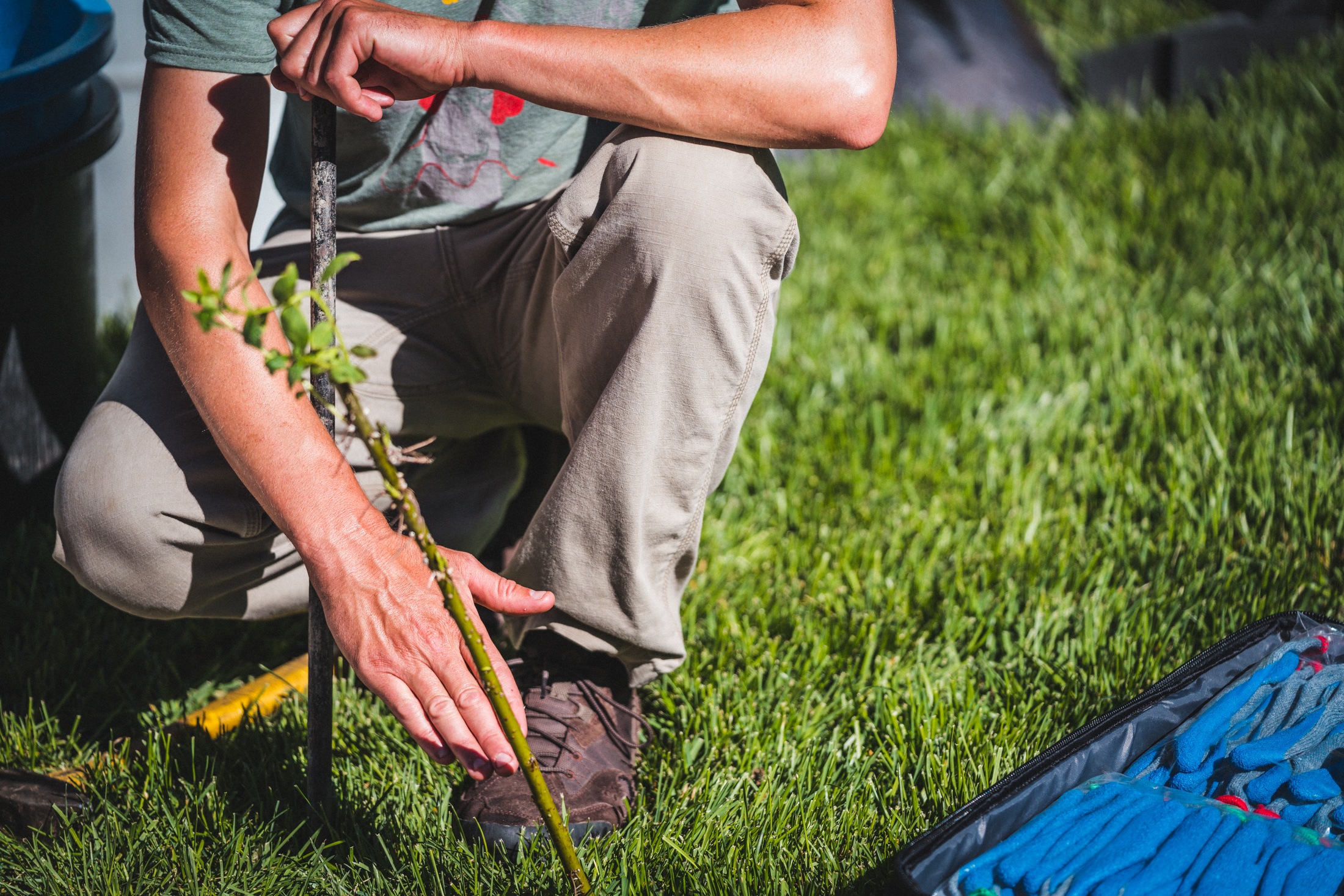
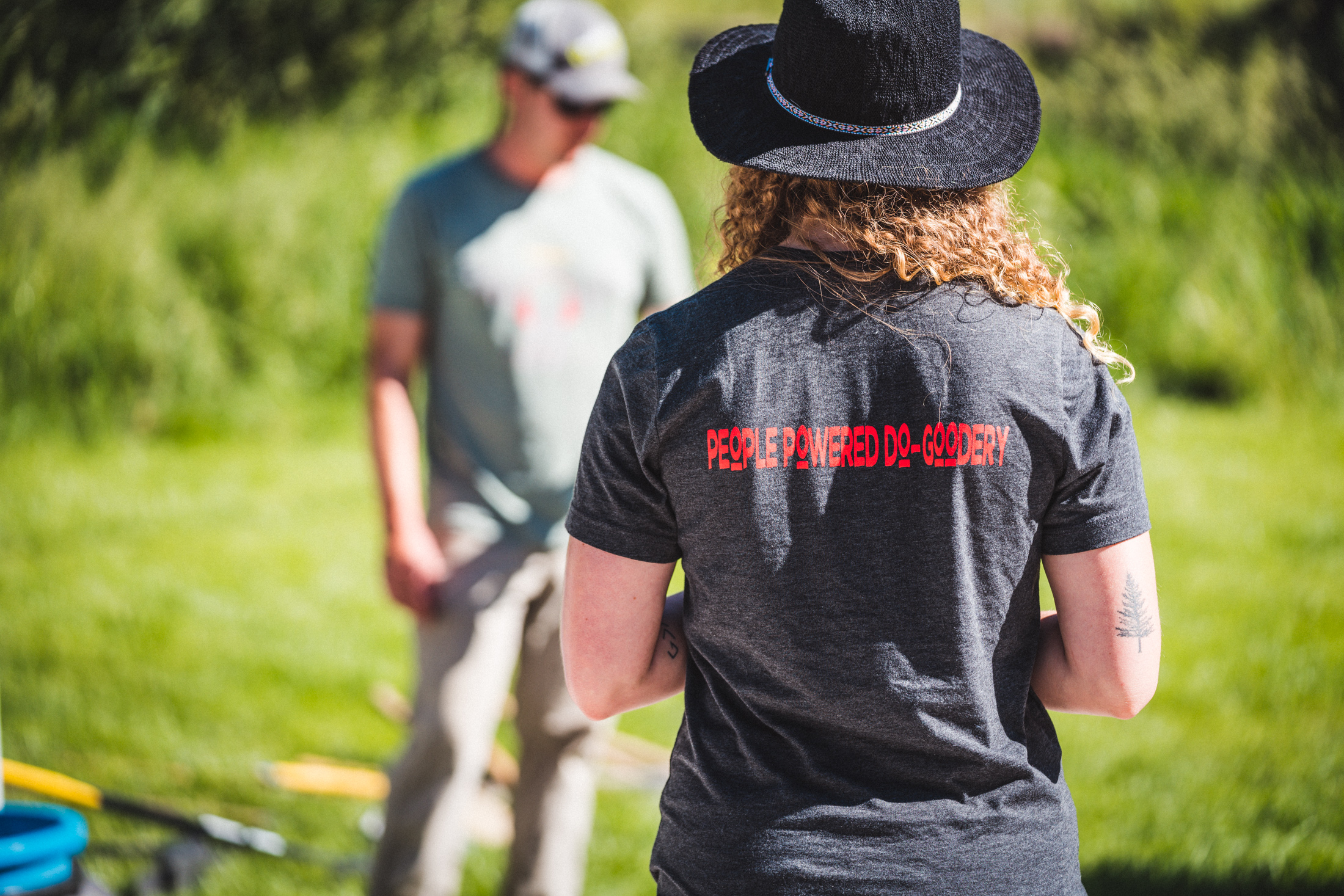
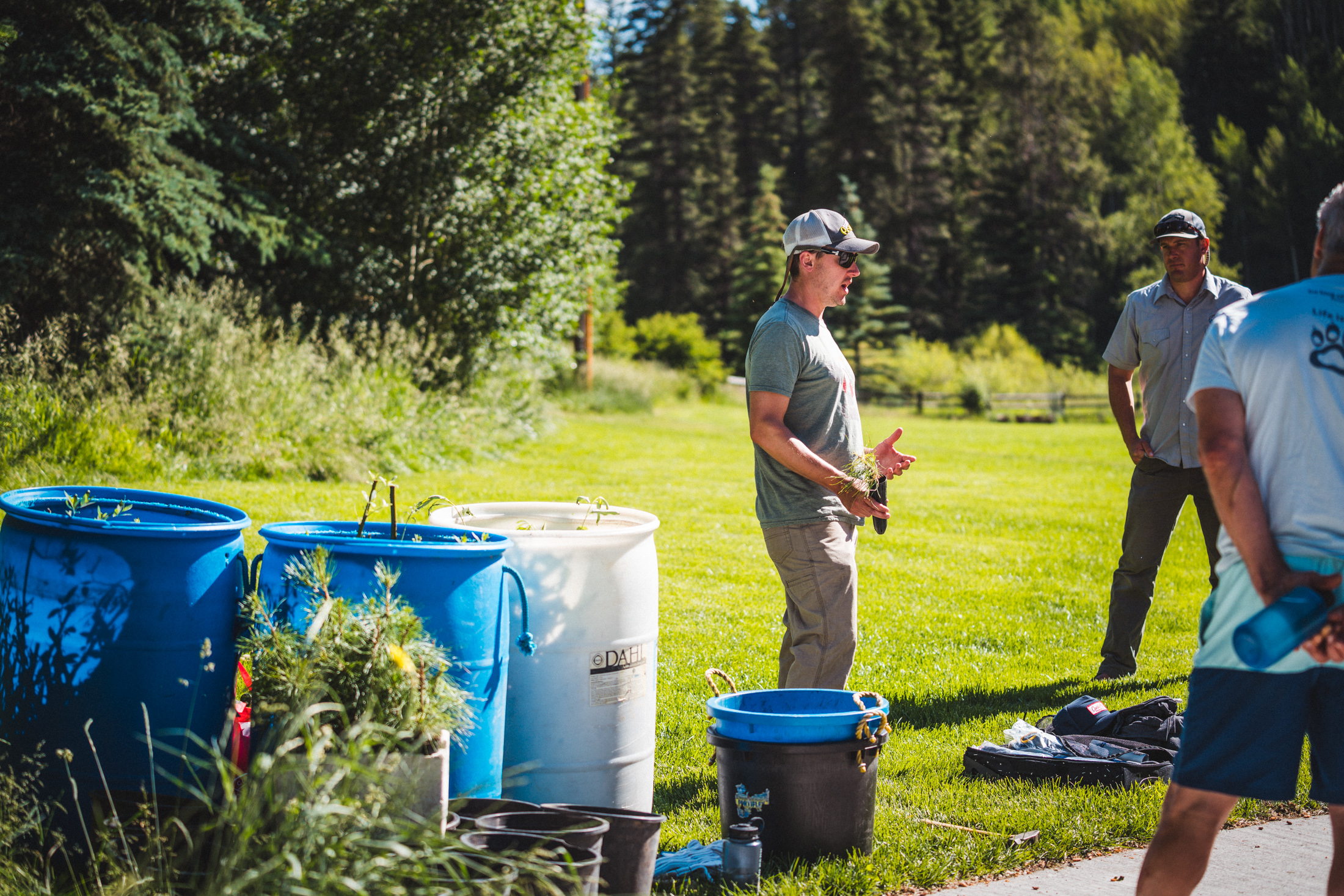
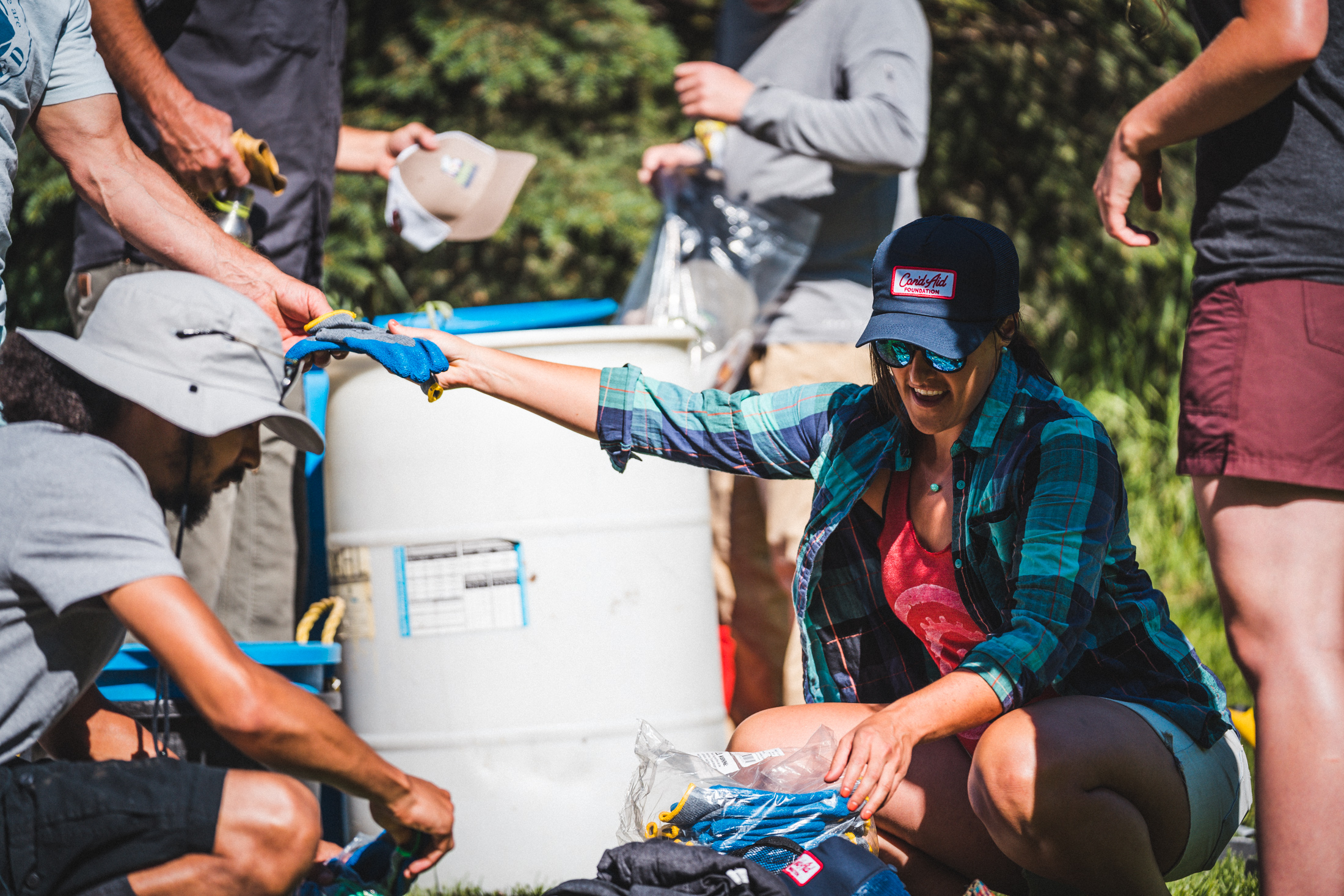
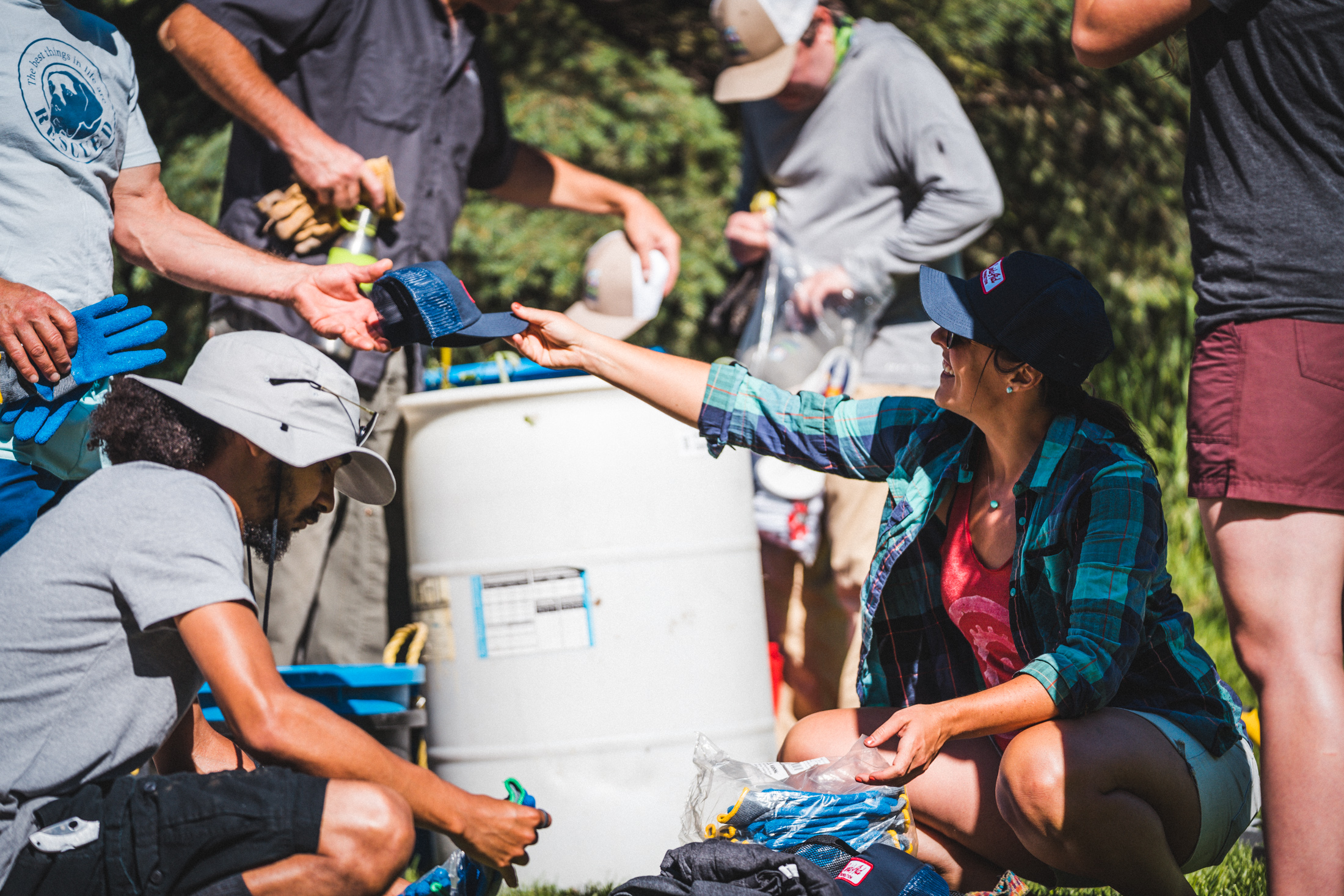
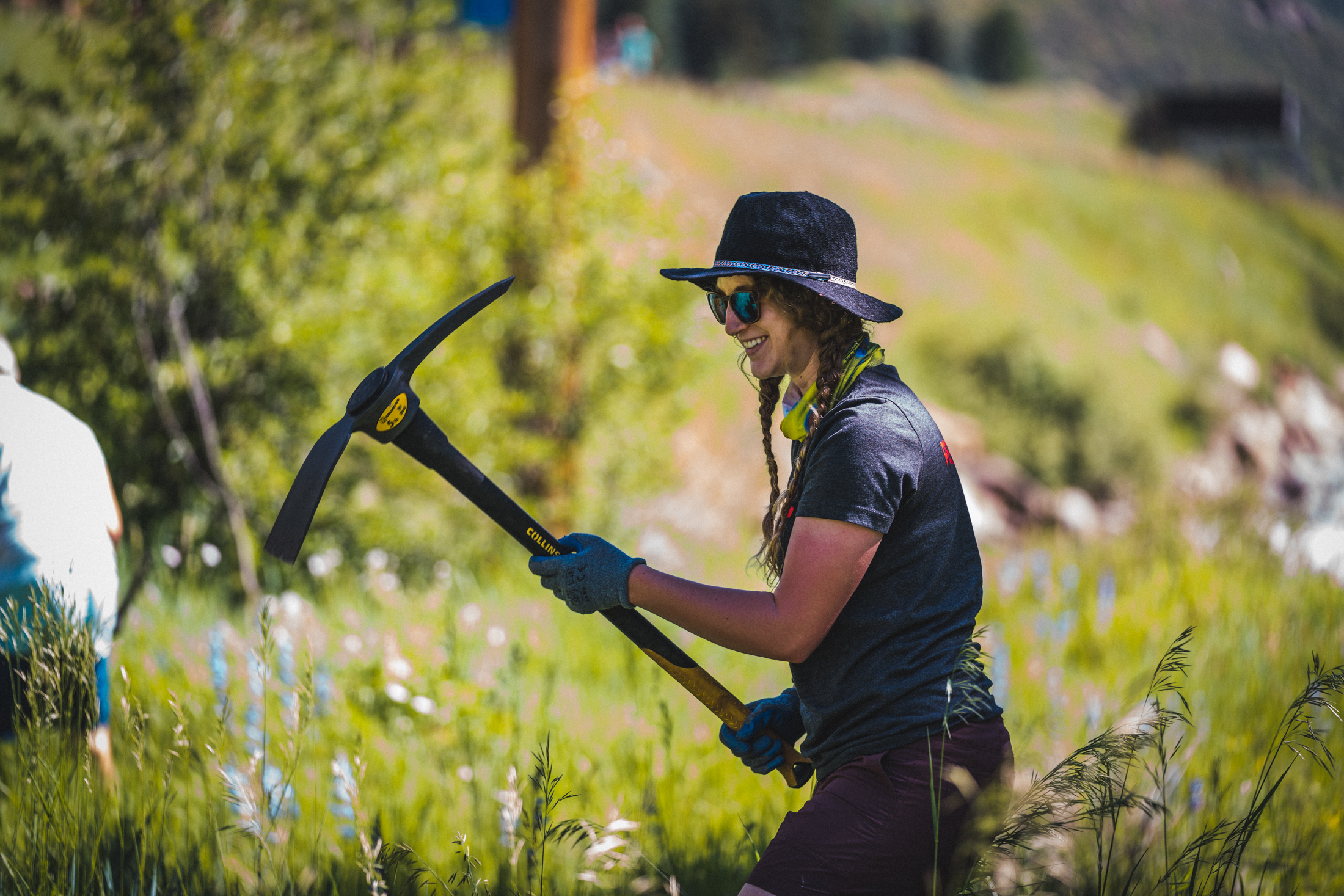
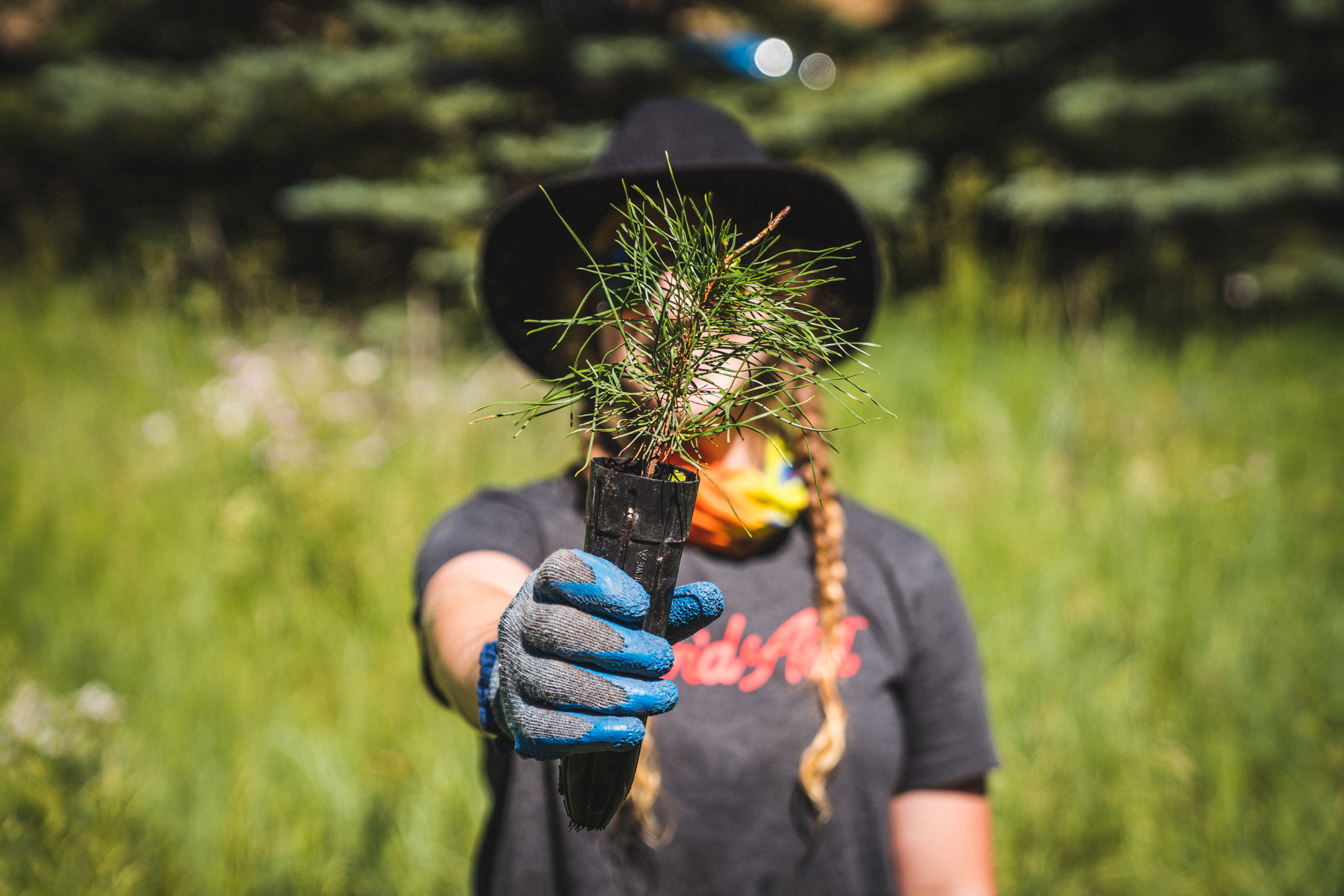
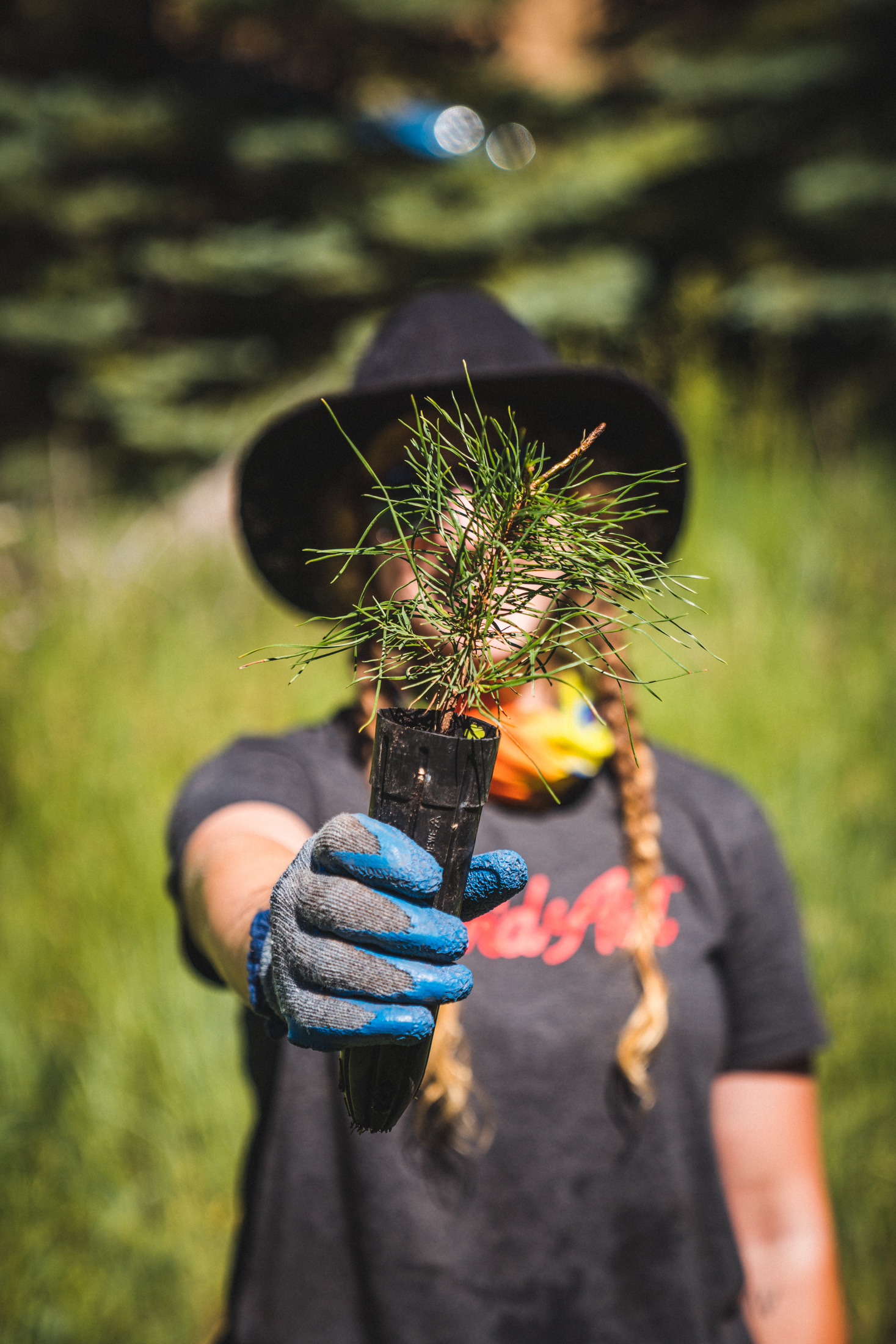
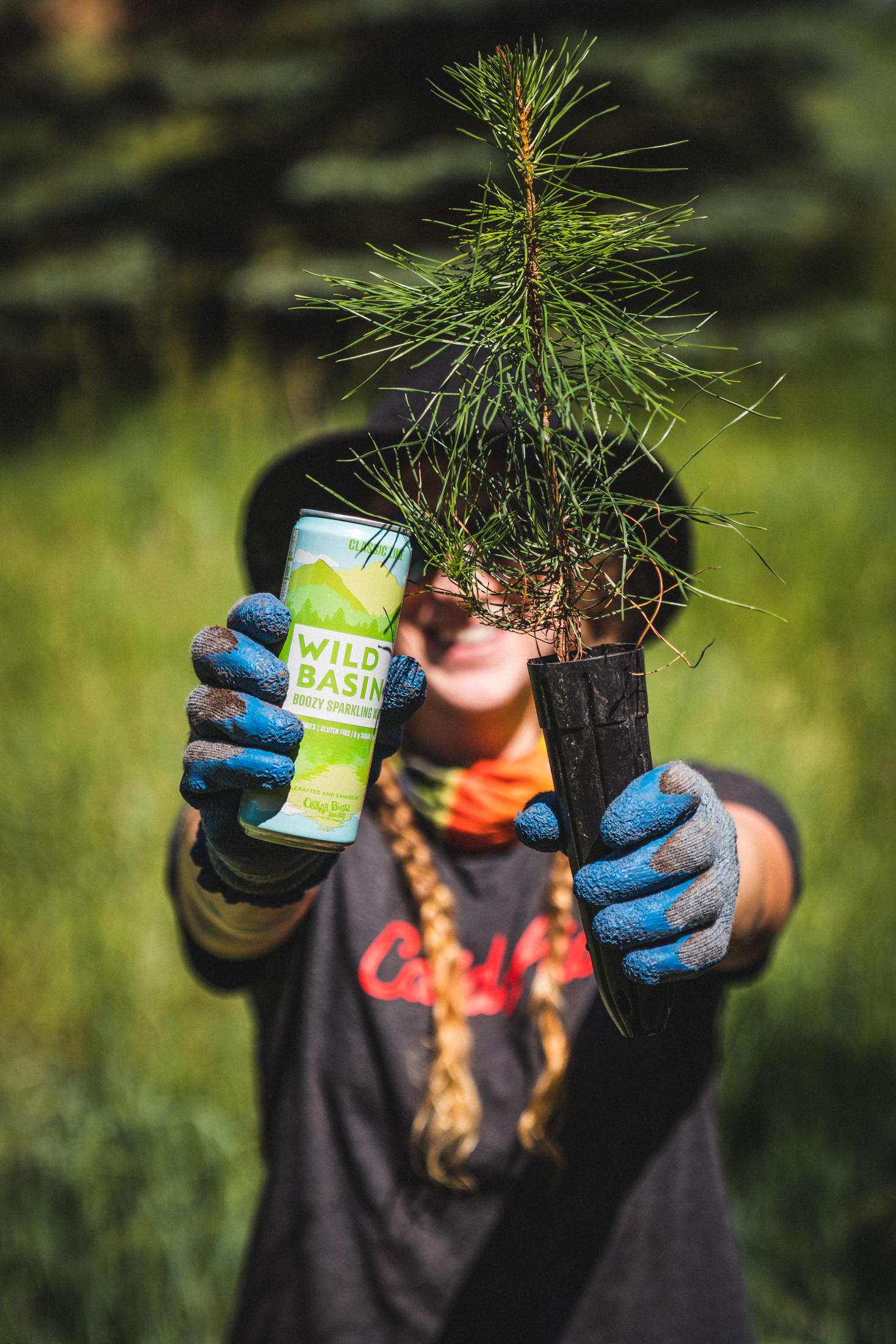
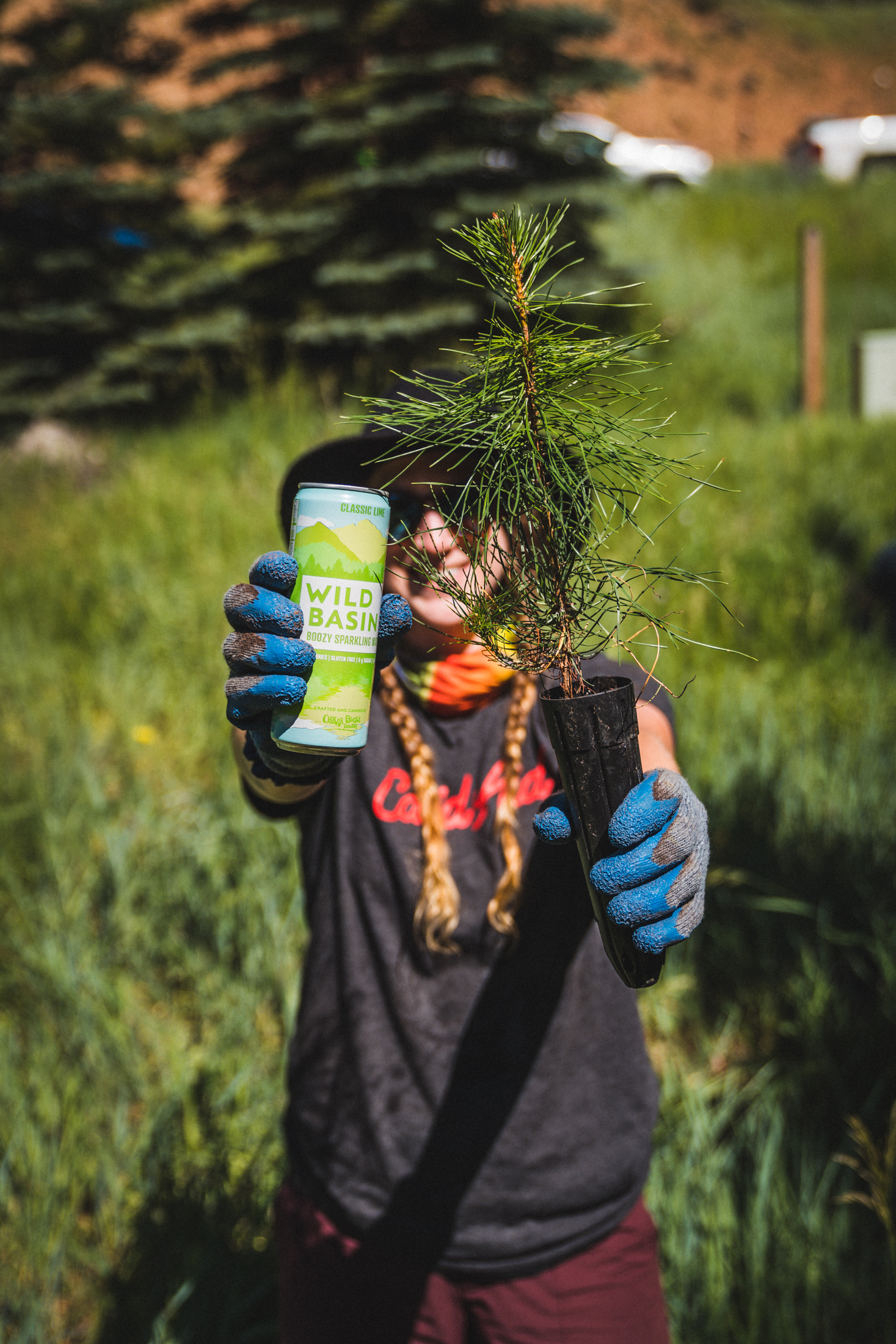
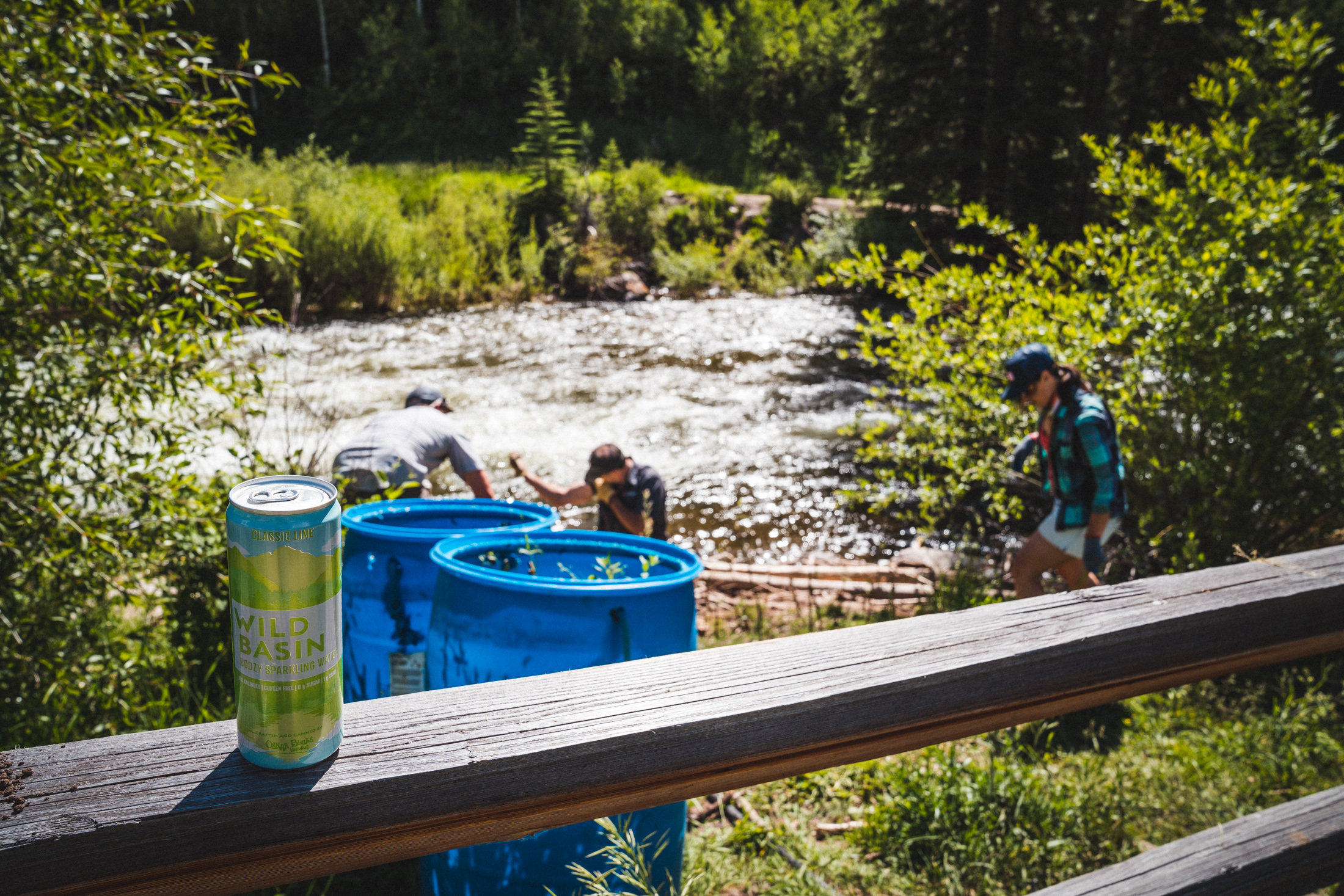
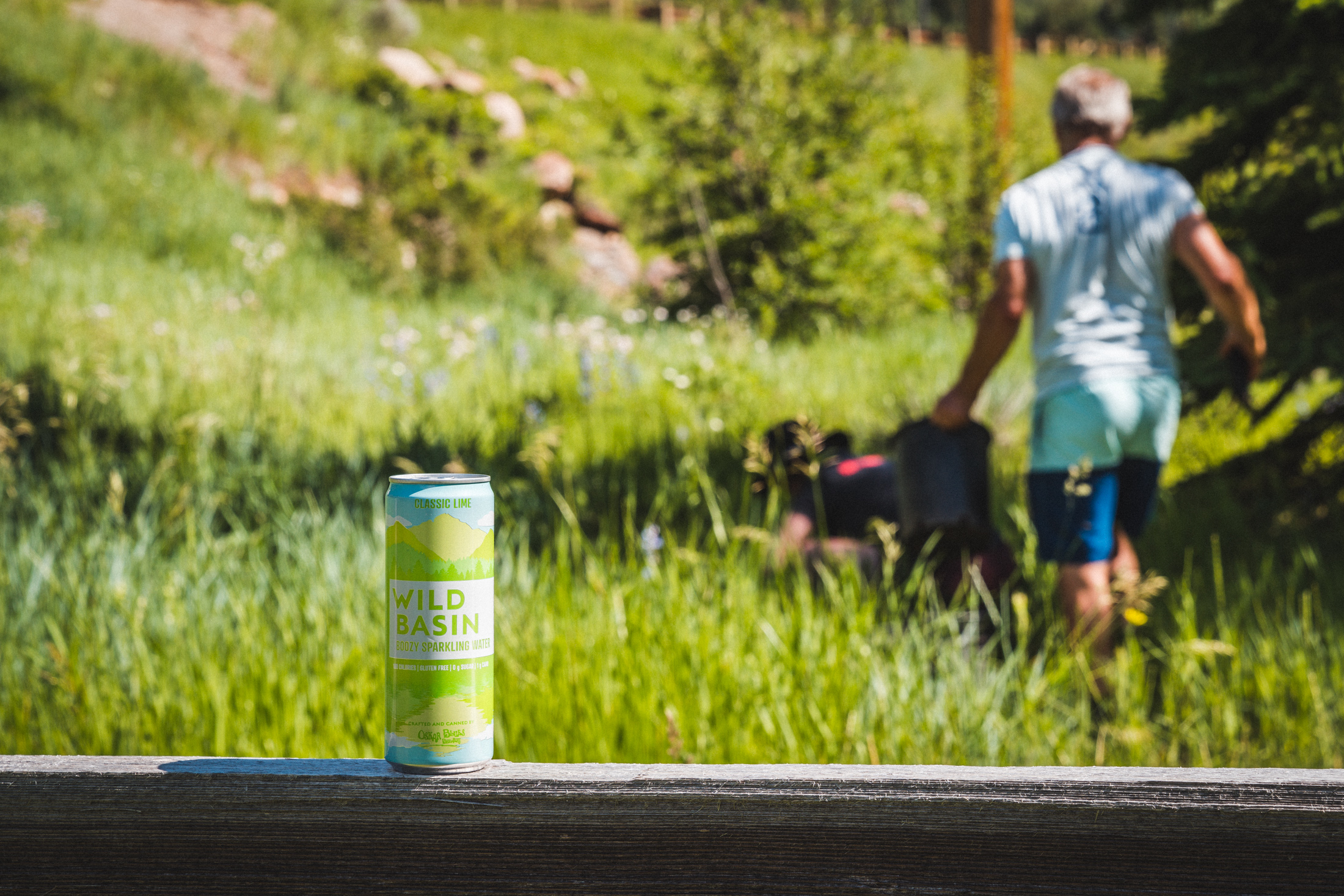


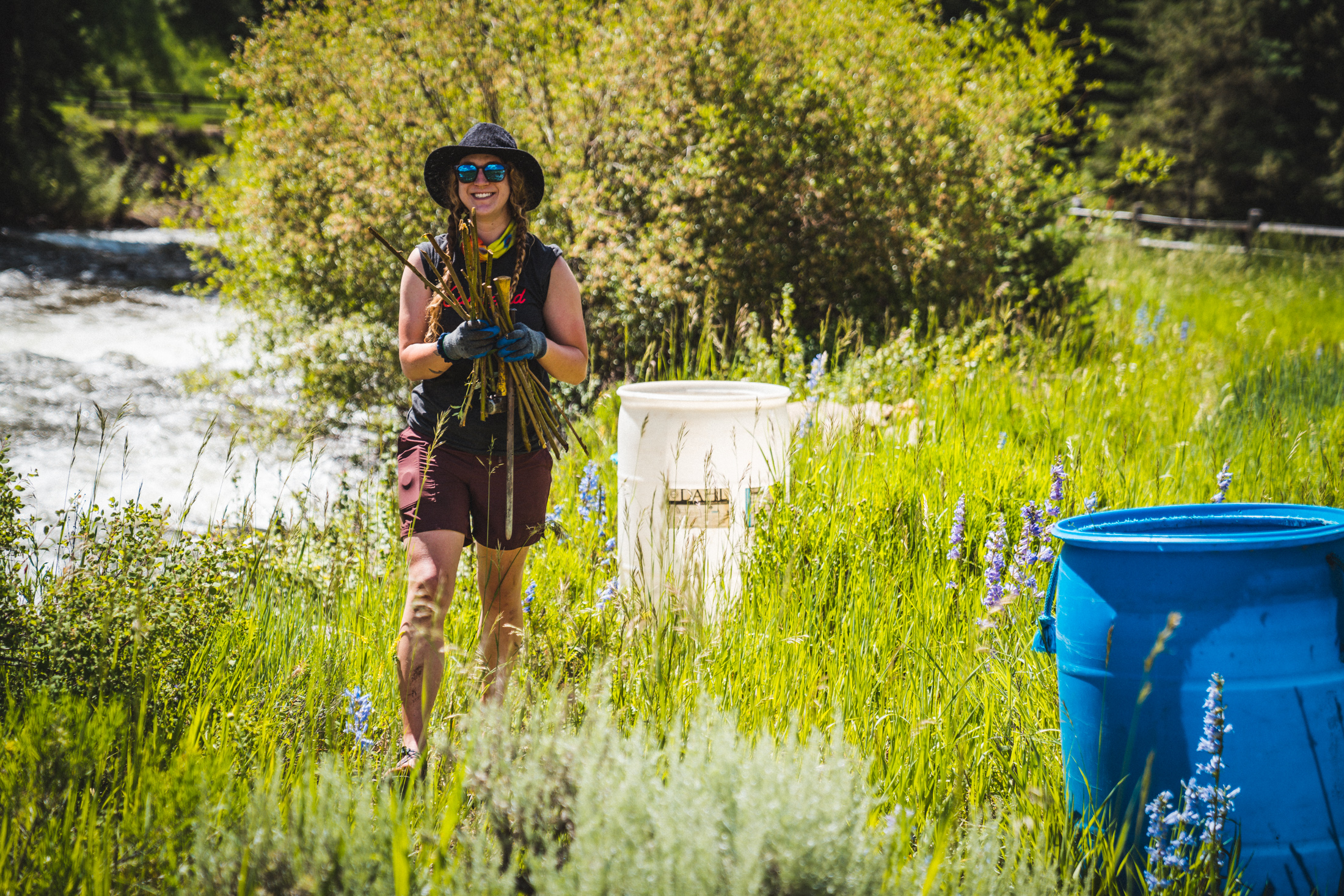

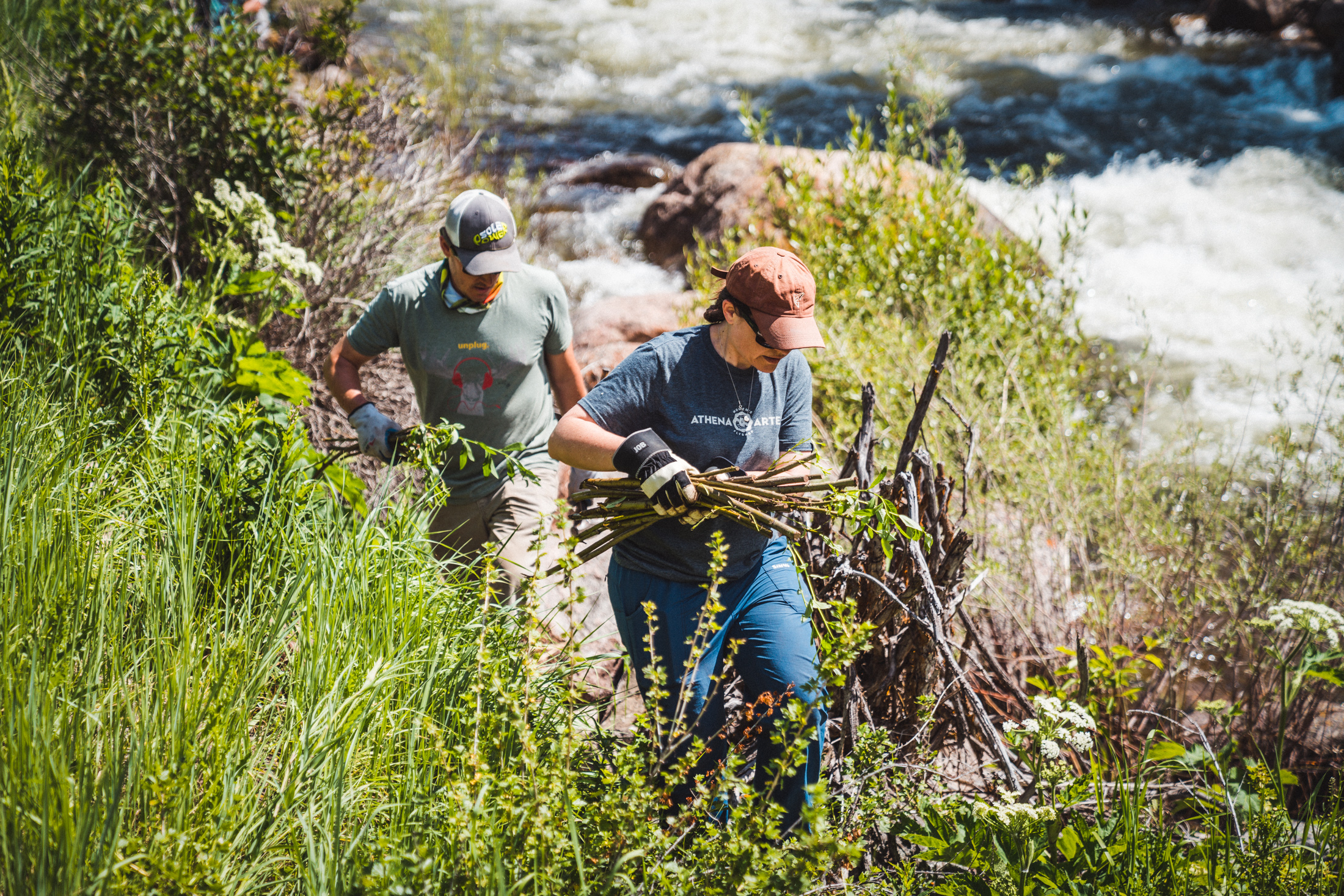


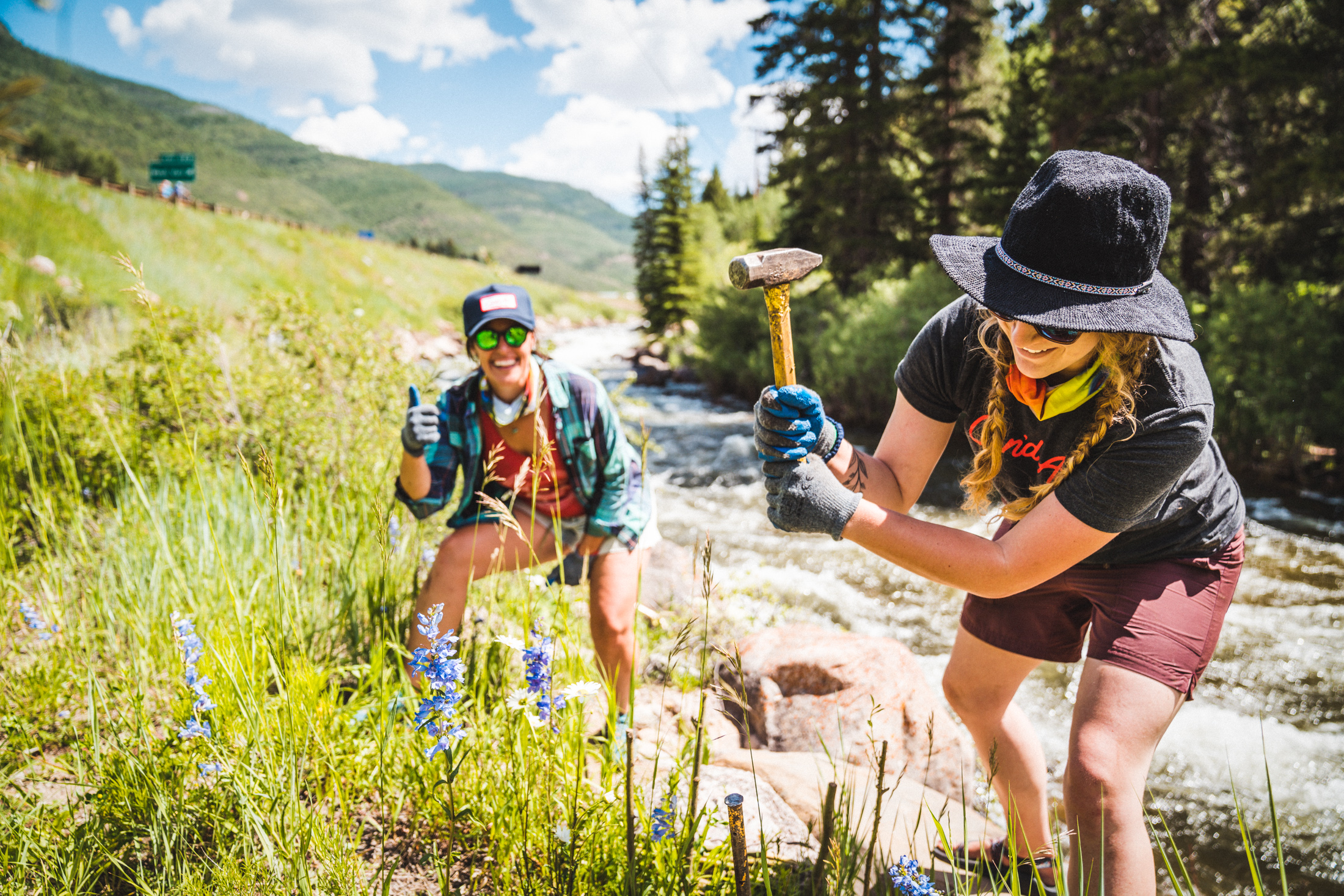

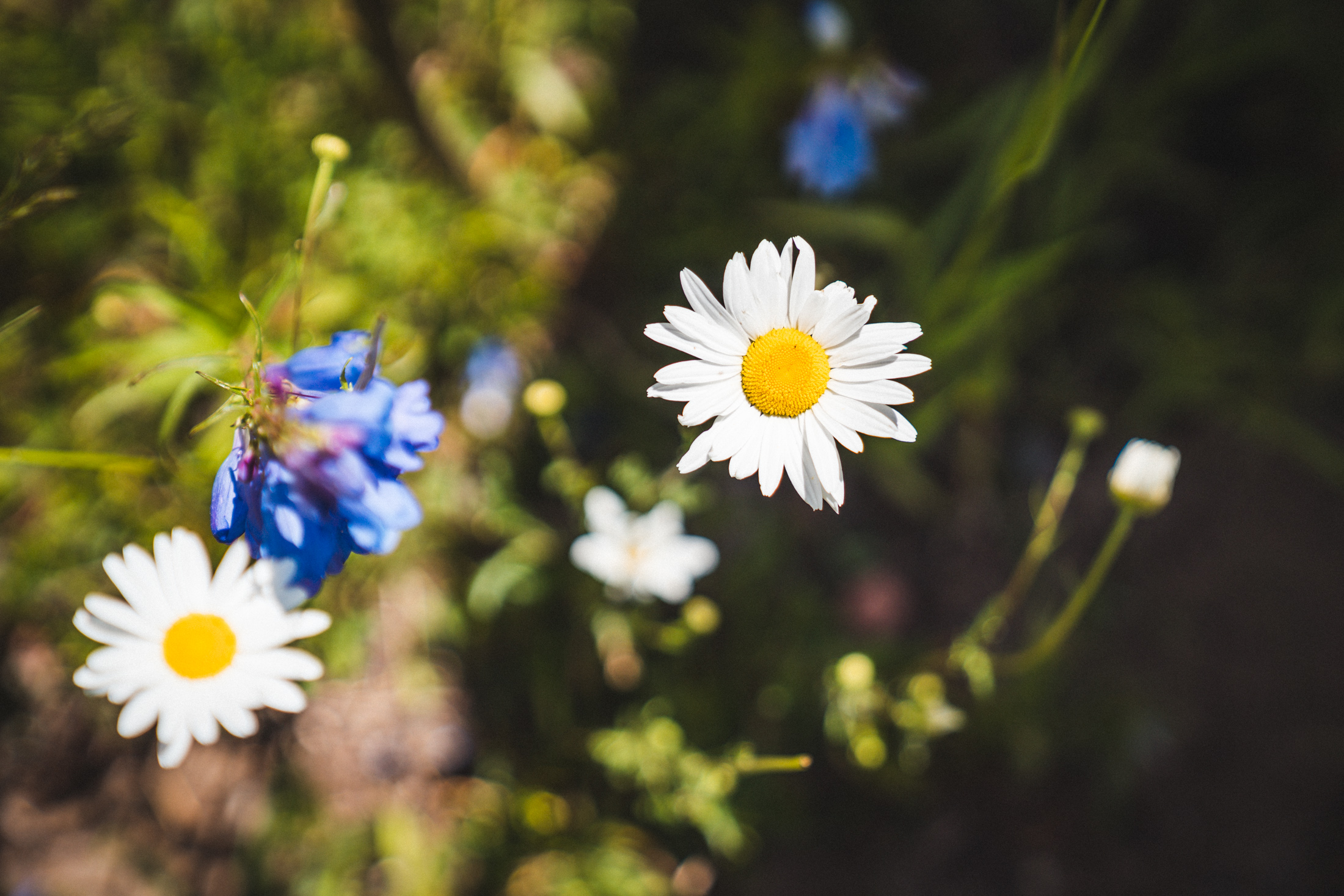
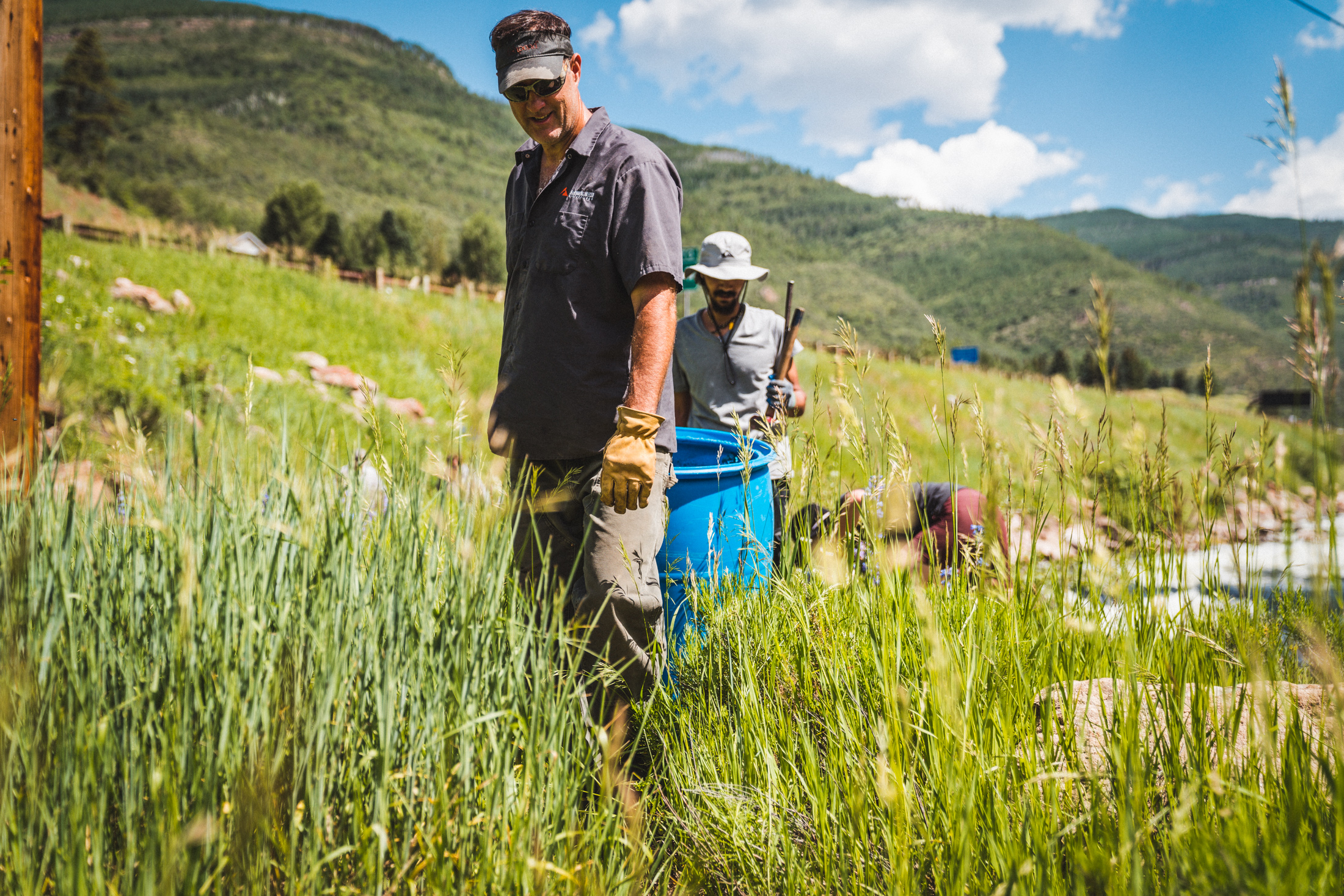
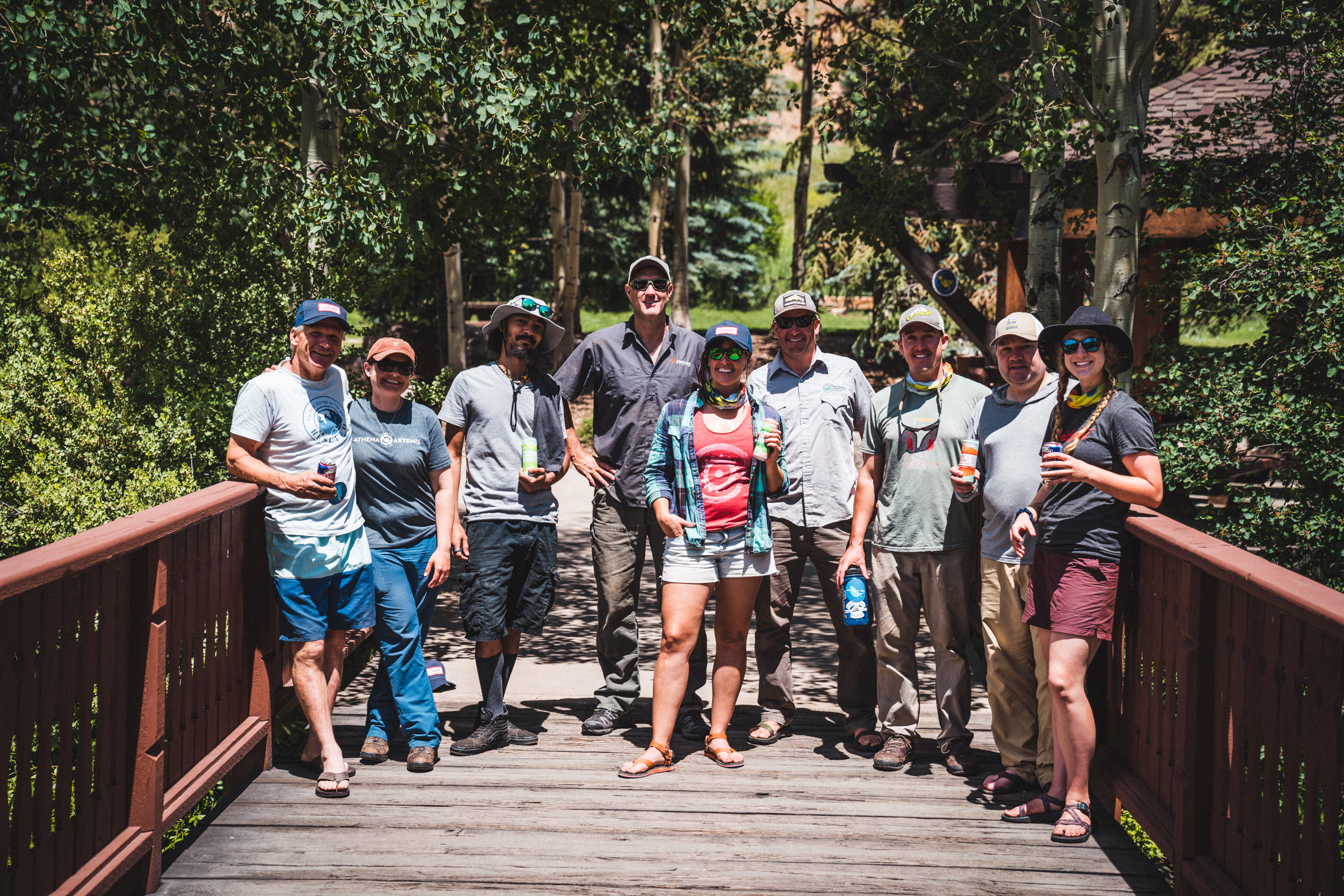
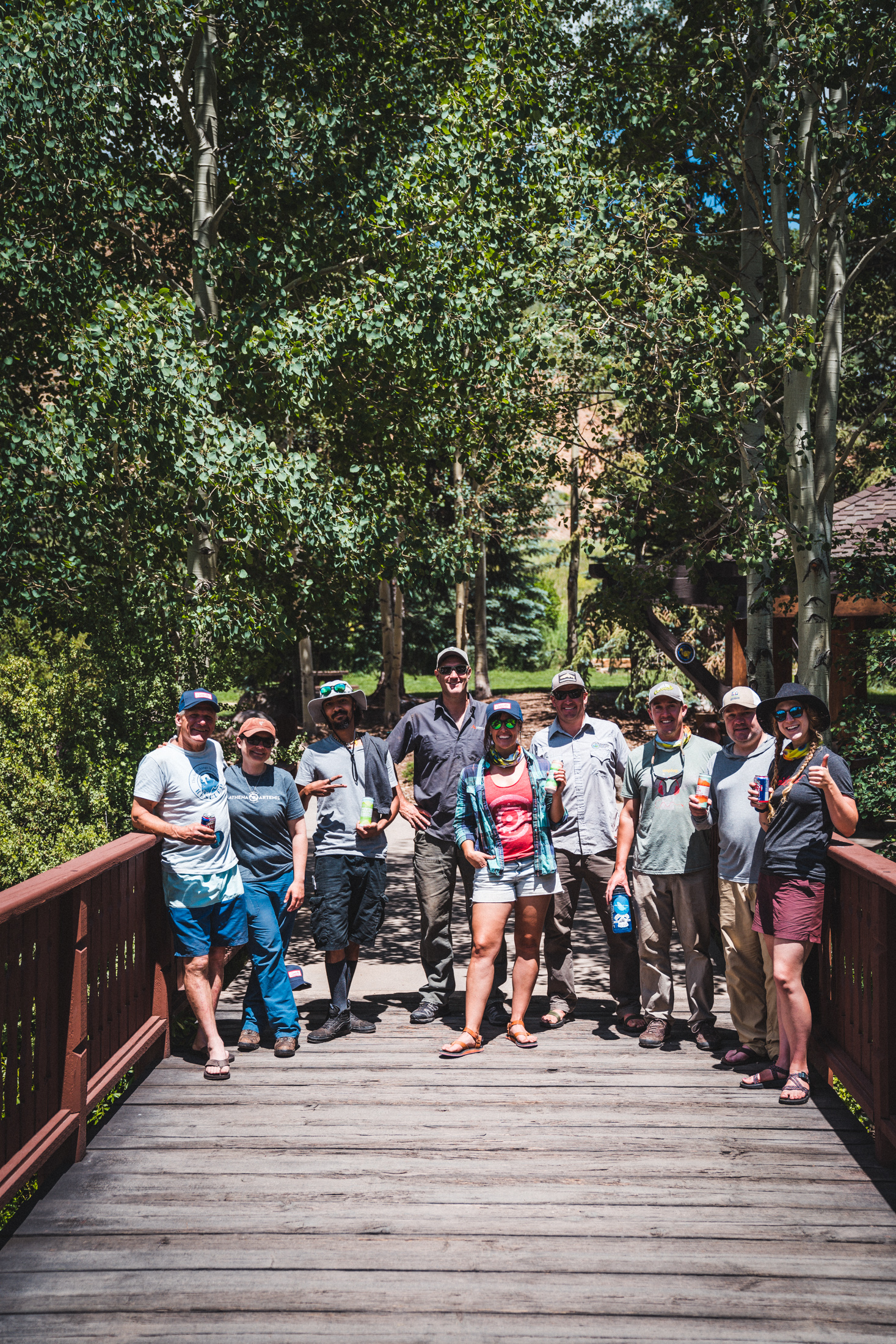

On July 20, 2019, volunteers gathered at the Gunnison River to monitor last year’s progress and continue their work to help restore habitat in the Basin. Volunteers floated to the 2018 work site and found many of the willows that were planted the previous year growing strong - despite the severe drought in 2018 and high Spring flows in 2019. This was a promising sight to see the volunteer work was taking root!
Small but mighty: A patriotic super volunteer!
Restoration work in 2019 took place beyond the banks of the Gunnison River. 25 volunteers spent the day building "one rock damns" in Dutch Gulch. These mulch damns slow the flow of water, prevent erosion and reconnect gullies to flood plains.
Ultimately, they trap sediment and extend flows in low water years - promoting long-term river health and grazing for deer, elk and the threatened Gunnison Sage Grouse!
After a morning of intensive rock work, the group got on the river once again to celebrate a job well done.
Check out more pictures on the Can’d Aid facebook post here. Also, CBS 4 News shared a video of the day, see below!
Thank you to all the people and organizations that volunteer their time to protect rivers in Colorado. Your efforts are crucial to the places we love to play, float, hike and fish!
Please follow and support our collaborative partners below!
Speak Up for South Park, the South Platte and the Arkansas Rivers
The Bureau of Land Management’s Royal Gorge Field Office is currently revising the plan that will determine the future management of 658,000 acres of public lands in the Arkansas and South Platte river drainages in eastern Colorado, and local sportsmen and women are encouraged to take part. These public lands offer world-class trout fishing, crucial habitat for Colorado’s most iconic wildlife, and some of the best backcountry hunting opportunities in close proximity to the Front Range.
Please attend a local public meeting (schedule below) in the next few weeks to share your perspective as a public land user and ensure that anglers have a say about the places where we love to fish. These events will offer updates on the planning process, allow the public to share their ideas and opinions on the draft plan, and suggest ways for citizens to stay involved.
This is your opportunity to voice concerns and make recommendations on how our public lands are managed. The 90-day comment period on the BLM’s Draft Eastern Colorado Resource Management Plan & Environmental Impact Statement closes Sept. 20, 2019.
Where and When:
Canon City - The Abbey Event Center, Benedict Room, 2951 East Hwy. 50, Canon City, CO 81212 - July 9 - 5:30-7:30 p.m.
Fairplay - Foss Smith Multipurpose Room, 640 Hathaway Street, Fairplay, CO 80440 - July 11 - 5:30-7:30 p.m.
Walsenburg - Washington School, Auditorium, 201 E. Fifth Street, Walsenburg, CO 81089 - July 15 - 5:30-7:30 p.m.
Denver - Denver Marriott West, Monart Room, 1717 Denver West Blvd., Golden, CO 80401 - July 18 - 5:30-7:30 p.m.
Colorado Springs - Westside Community Center, 1628 W. Bijou Street, Colorado Springs, CO 80904 - July 22 - 5:30-7:30 p.m.
Greeley - Greeley Recreation Center, Room 101 ABC, 651 10th Ave, Greeley, CO 80631 - July 23 - 5:30-7:30 p.m.
You can read the Draft Plan here.
Online COMMENTS:
Can’t make a public meeting? Comments are being accepted online here.
Just click the “Comment on Document” button.
Suggested Talking Points:
Arkansas River.
• Protection of aquatic wildlife, stream health and Gold Medal fisheries: We are asking that the BLM establish and maintain strict stipulations for surface occupancy for oil and gas development surrounding bodies of water containing or designated for introduction of native cutthroat trout (400 meter buffer) and those designated as Gold Medal Trout Waters (805 meter buffer) along the South Platte and Arkansas river drainages. The current draft includes these stipulations but they need to be maintained through the final plan.
• Conservation of unfragmented, functional habitats: We ask that the BLM safeguard our best hunting and fishing areas by adopting the Backcountry Conservation Area (BCA) management tool designed to conserve important big game habitat, prioritize active habitat restoration and enhancement, and support important public access for hunting, angling and other forms of recreation.
• Conservation of big game migration corridors and seasonal habitat: We’d like to see the BLM take steps to ensure the conservation of identified big game migration corridors and winter range. This should not only include corridors that have already been mapped and analyzed by Colorado Parks and Wildlife, but also ensure that the RMP is flexible enough to conserve migration corridors that will be mapped in the future.
• Public access: Public access is necessary for outdoor recreation and we encourage the BLM to identify opportunities to increase access to public lands that are landlocked or difficult to access because there are few or no access points across private land that allow the public to reach BLM lands.
• Community-driven planning: We support conservation measures to maintain the scenic, wildlife, and recreational values of the South Park valley, and the management direction for this iconic Colorado landscape should align closely with the community recommendations developed by local stakeholder groups along with Park County.
Native Trout Need Your Help
Young Greenback Cutthroat Native Trout.
Photo by: Neal Bullock/2018
After an epic snow year, Spring has finally settled in Colorado - which means great fishing and that Greenback recovery projects are just around the corner!
The Greenback Cutthroat Trout, once declared extinct, is making a comeback in Colorado – thanks in large part to agency partners and the hundreds of volunteers that have helped spawn, stock, and restore habitat over the past few years. 2019 is poised to be the biggest year yet for Greenback recovery projects and we need your help! Follow the linked opportunities below to see how you can make a difference for this threatened species and be a part of this historic recovery effort!
Colorado TU works closely with our agency partners to support recovery projects with funding and volunteers. Your help with spawning, stocking, habitat restoration, and citizen science goes a long way.
Thank you for helping to recover this critical trout species and we look forward to seeing you out there!
VOLUNTEER OPPORTUNITIES
Click any opportunity below to learn more and sign up.











